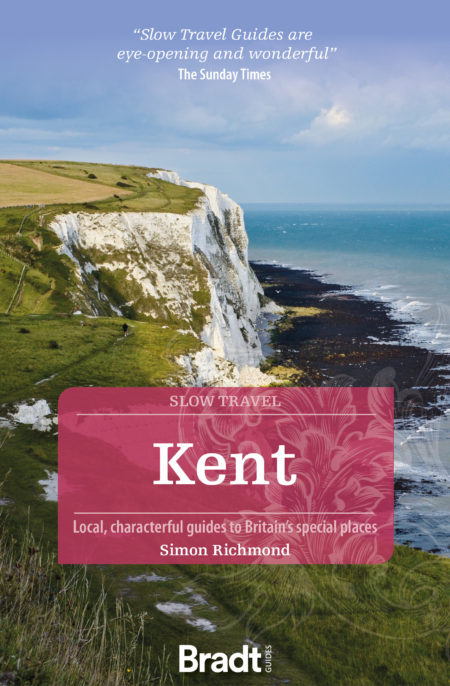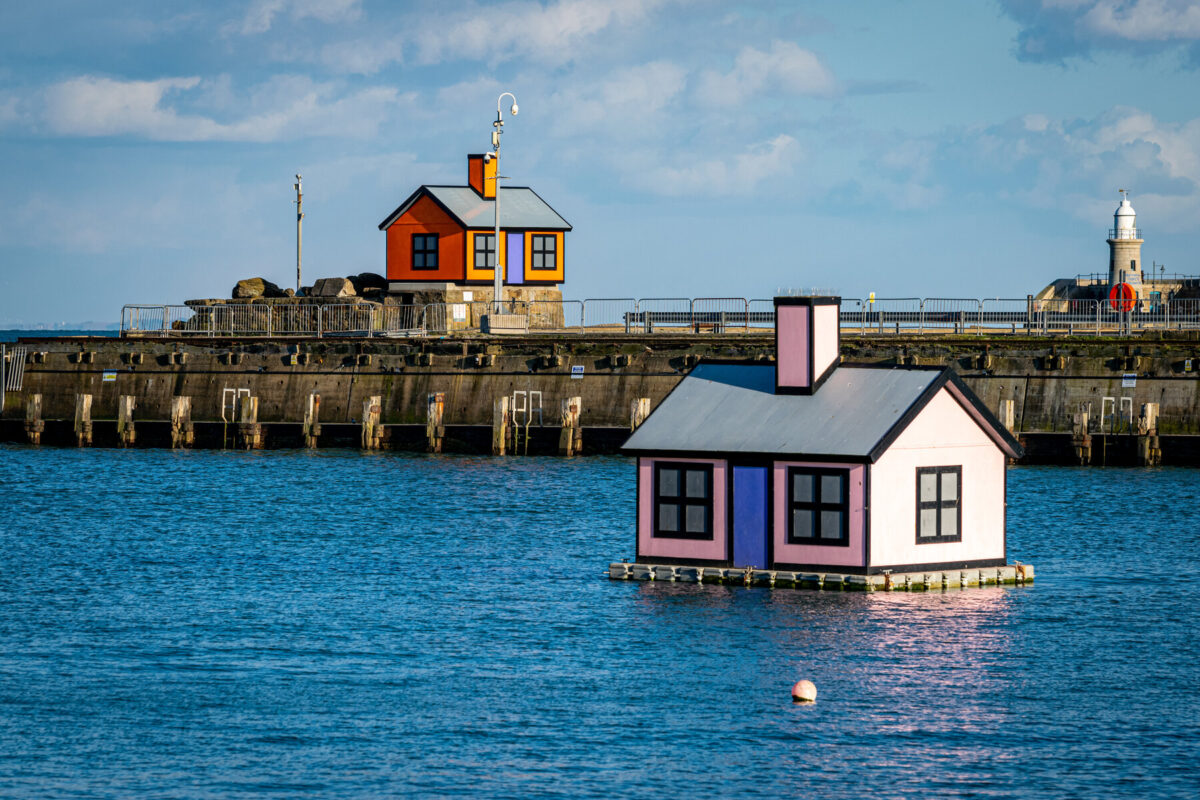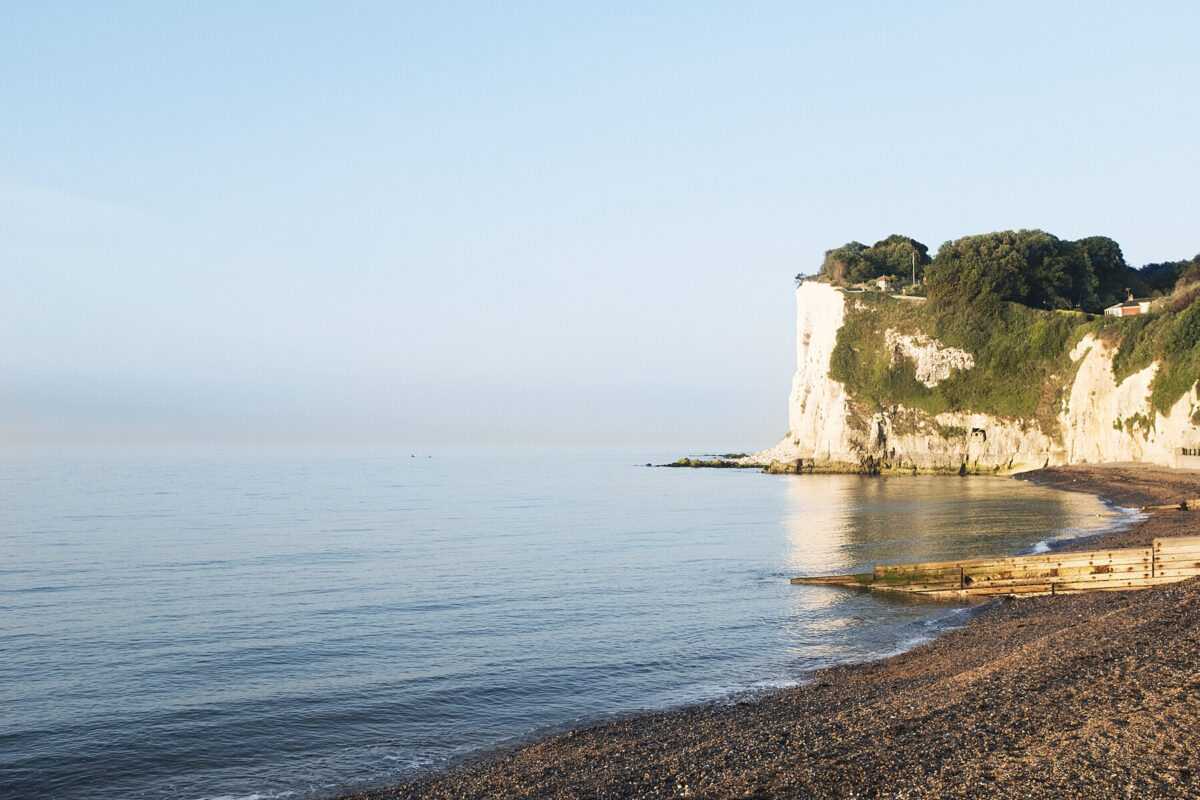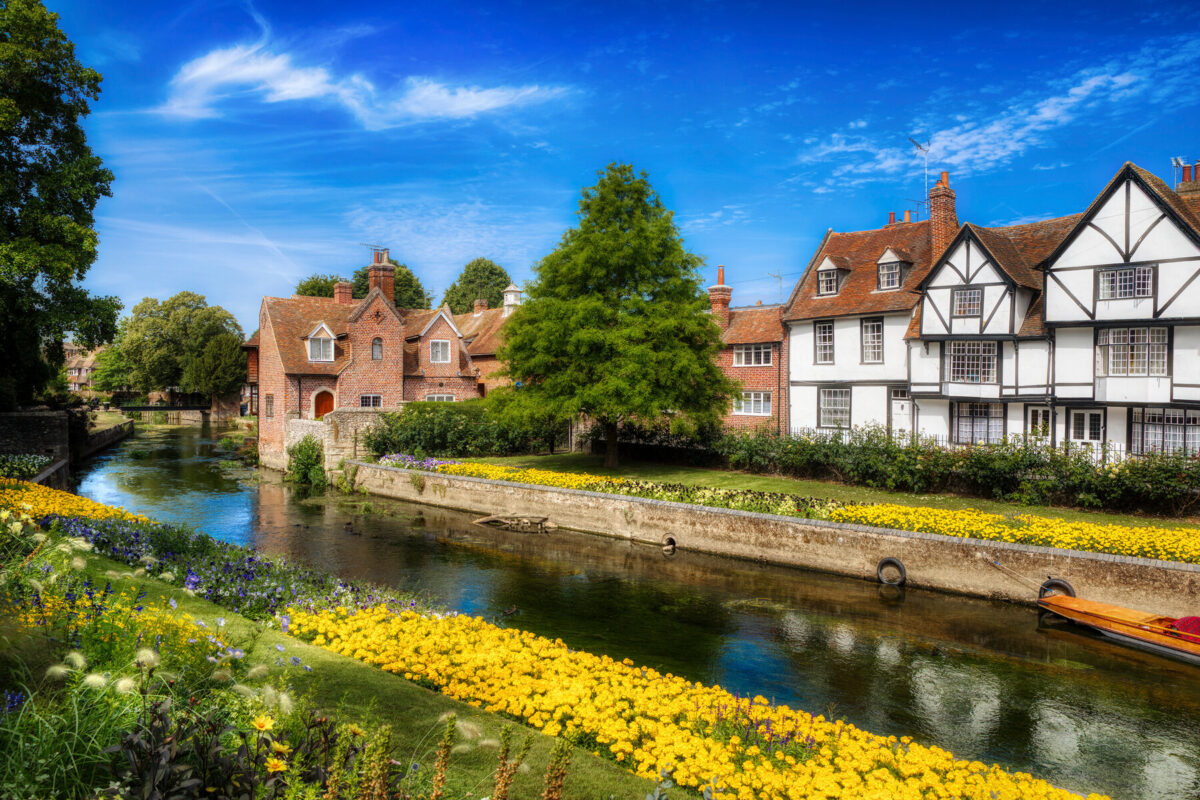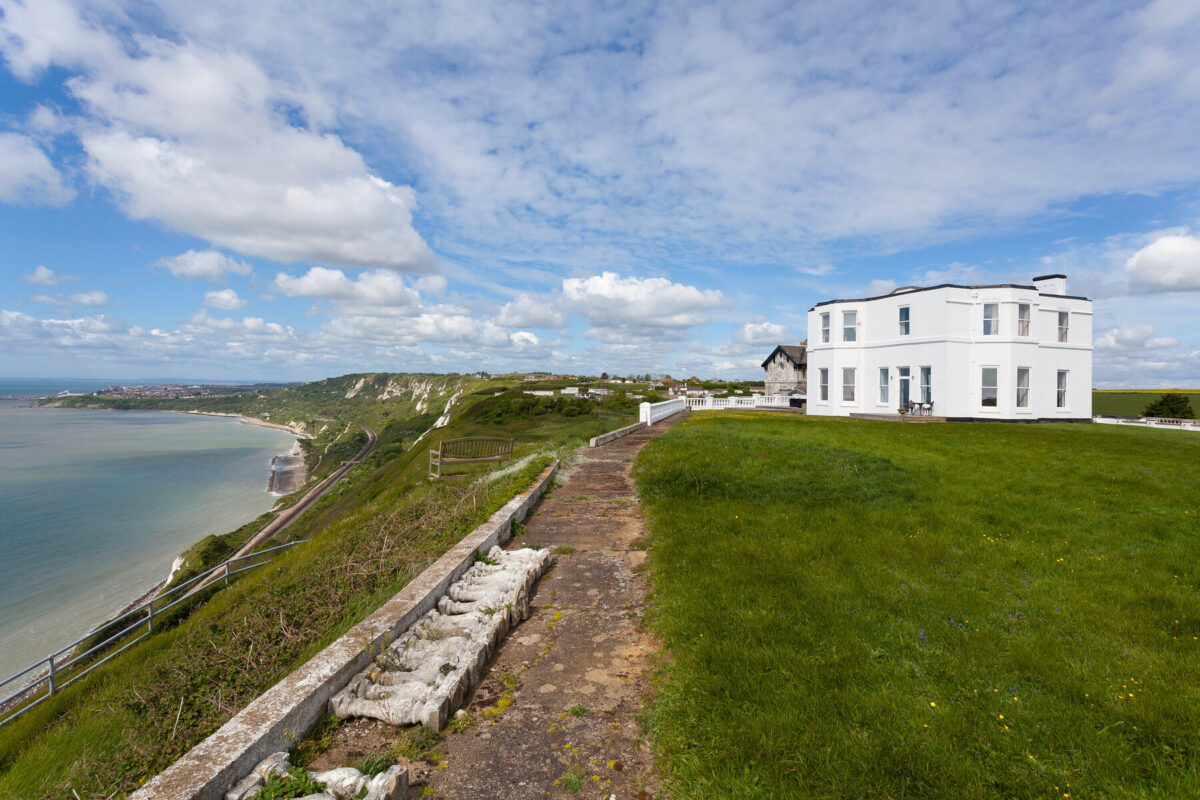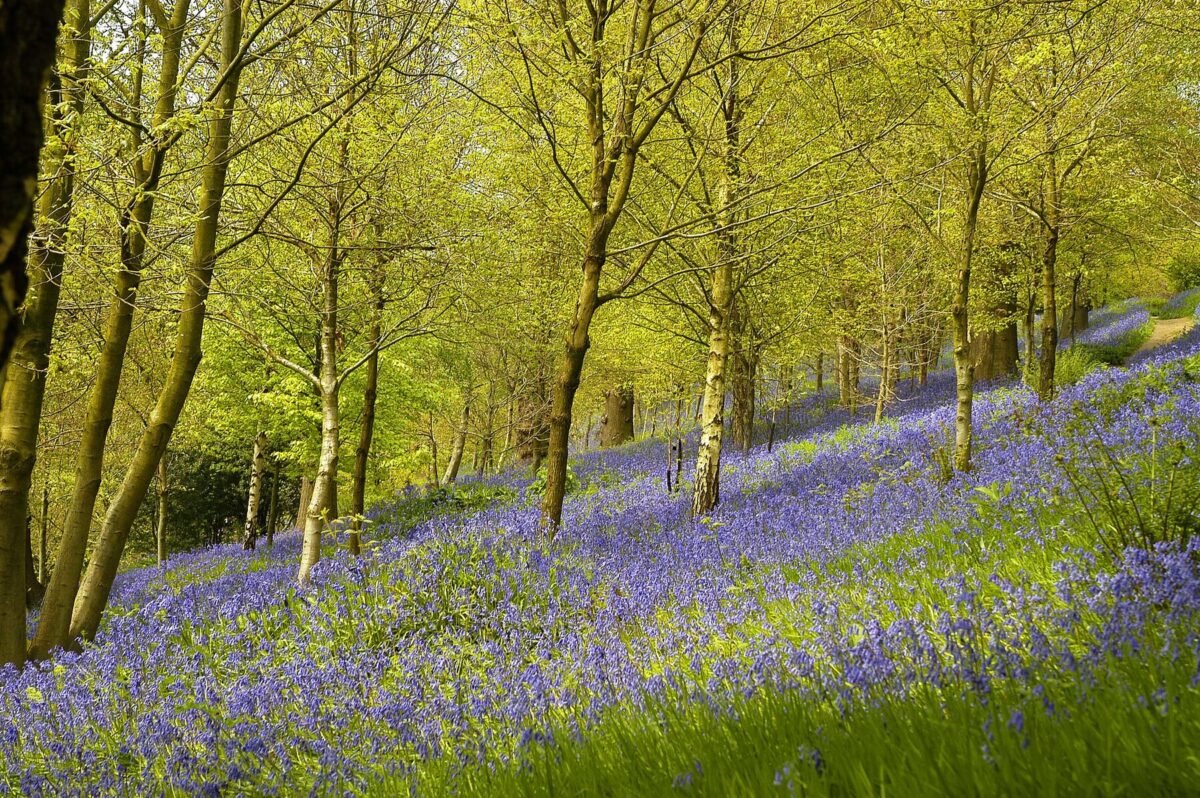Take your travels slowly through Kent and you’ll be amazed how much there is to discover, enjoy and savour.
Simon Richmond author of Slow Travel: Kent
Why travel to Kent
Kent is a county for all seasons. In spring, lie on a picnic blanket beneath frothy clouds of cherry and apple blossoms in the orchards of the Brogdale National Fruit Collection, near Faversham. In the heat of July, ride on the small-scale Romney, Hythe and Dymchurch Railway to the otherworldly shingle beach at Dungeness, where you can lunch on seafood fresh off local boats. Or catch the coastal breeze during a hike across the chalk wild flower meadows atop Dover’s White Cliffs, followed by a cream tea at the South Foreland Lighthouse. In autumn, along the forest paths of Bedgebury National Pinetum or in the grounds of Scotney Castle, be dazzled by burgundy, rust and gold-leaved trees. And in December, listen to (or even join in) carol singing in the awesome World Heritage site that is Canterbury Cathedral.
Kent is tailor-made for Slow Travel moments like these. Yes, you can zip through parts of the county on motorways and high-speed rails but riding the slow trains and navigating the B-roads remains the best way to appreciate Kent’s superbly varied landscapes, wildlife, history and culture. Ancient footpaths, droveways and country lanes meander across two Areas of Outstanding Natural Beauty (AONB) – the North Downs and the Kent Weald. These rural byways offer no end of leisurely ambles or bicycle rides between picturesque villages like Elham, Eynsford, Chiddingstone and Wye, places that turn the clock back centuries with their Kentish ragstone and half-timbered buildings, churchyards of ancient lichen-covered gravestones, and cosy tea houses and wooden- beamed pubs. They are the epitome of bucolic, romantic England.
Just 21 miles from France at the narrowest point of the Strait of Dover, Kent has been Britain’s doorway to continental Europe for millennia. From the landing of Romans in 55 BC to the opening of the Channel Tunnel nearly 2,000 years later, Kent has been central to English history. Via the Cinque Ports of Dover, New Romney, Sandwich and Hythe, the county was enriched economically by trade and culturally through the welcoming of refugees like the Huguenots. The county’s abundant stock of castles and manor houses, including Knole, Hever and Chartwell, have been homes to British royalty, American tycoons and eminent politicians. Its museums and galleries are storehouses of treasures and curiosities, while its landscapes and communities have inspired artists and writers and continue to do so in regenerated resorts such as Folkestone and Margate, both riding a wave of 21st-century creativity and enterprise.
Kent’s many nature reserves and gorgeous gardens are sanctuaries of calm and serenity. There are more species of orchids here than in any other county, as well as rare butterflies and introduced animals like Exmoor ponies and European bison, used to keep the land open to a wider biodiversity. In lesser-visited locations, such as the Isle of Grain, the Isle of Sheppey and Romney Marsh, it’s hard to believe you are within an hour or two of London. Take your travels slowly through Kent and you’ll be amazed how much there is to discover, enjoy and savour.
See also this guide on the best things to do in Sandwich, Kent.
For more information, check out our guide to Kent
Food and drink in Kent
Food
Kent’s reputation for supplying some of England’s most delicious food and drink is well deserved. You can dine on everything from freshly shucked oysters and cracking fish and chips to the farm-to-table degustation menus at Michelin-starred restaurants and gastropubs. Hardly a week goes by without some tempting new culinary venture being launched, with specific foodie hotspots being Margate, Faversham, Deal, Folkestone, Tunbridge Wells and Whitstable.
The county has been a centre of horticultural excellence for centuries. Legend has it that it was Henry VIII who first branded the county the ‘Garden of England’, after so enjoying a bowl of Kentish cherries. It was under the same monarch that large-scale growing of fruit in Kent began after Richard Harris, Henry’s fruiterer, established England’s first fruit collection on 105 acres at Teynham, a village between Sittingbourne and Faversham. Today Kent continues to be home to the National Fruit Collection at Brogdale.
Kent is also home to 15 traditional fruit orchards managed by local communities – Kent Orchards has details on them all. Visiting these orchards is a wonderful opportunity to learn about Kent’s agricultural heritage, as well as to taste fruits fresh from the trees. There are many other community growing projects across the country to discover, such as Margate’s Windmill Community Gardens, Folkestone’s Locavore Growing Project, the Abbey Physic Community Garden in Faversham and Deal Hop Farm.
Foods that are Kent specialities include the super-sweet gypsy tart, a shortcrust pastry pie with a caramel-like filling made from evaporated milk and brown sugar; Canterbury apple tart with a filling of grated apples and lemon, topped with apple slices; Kentish rarebit, a toasted sandwich of cheese and apple slices popularised by the fruit pickers in Kent’s orchards; and cobnuts, a local type of hazelnut, harvested while green in mid-August and with brown shells and husks by mid-October.
A comprehensive resource on food, drink and craft businesses in Kent is Produced in Kent. One of their projects is Kent Food Trails from which you can download guides to the county’s cherry and apple orchards and berry farms, vineyards, ciders and juices, hops and beer, cheeses and dairy produce, and craft distilleries.
Drink
The ancient crafts of beer and cider making are alive and well in Kent. The common hop Humulus lupulus (meaning ‘wolf of the woods’ in Latin) was imported from Belgium and first planted in Kent sometime in the 16th century. In his Tour of the Whole Island of Great Britain, published in 1724, Daniel Defoe described east Kent as the ‘mother of all hop grounds’. Kent’s chalky soils are particularly suited to growing hops and hop gardens, as they were known, were a feature of every parish of the county by the middle of 19th century.
There are over 40 breweries in the county, ranging from Britain’s oldest, Shepherd Neame, based in Faversham since 1573, and Curious Brewery in Ashford, established as a micro-brewery in 2011 but now so successful it has a huge, state-of-the-art facility with taproom and restaurant, to small-scale operations like Breakwater Brewery in Dover and Tenterden’s Old Dairy Brewery.
Kent’s combination of free-draining chalky soil and a mild climate with sufficient sunlight and cooling coastal breezes means its ‘terroir’ is also particularly suited to the production of sparkling wines – so much so that the Champagne house Taittinger has invested in a 69-acre plot of land on a former apple farm near Chilham to plant Chardonnay, Pinot Noir and Pinot Meunier grapes to produce English bubbly. This French-British venture, titled Domaine Evremond, planted its first vines in 2017 and so it will be a few more years before their wines debut on the market. In the meantime, they are collaborating with six other major local wineries (Balfour, Biddenden, Chapel Down, Gusbourne, Simpsons and Squerryes) to promote Kent-produced wines through Wine Garden of England.
Where to stay in Kent
For information about accommodation, see our list of the best places to stay in Kent.
What to see and do in Kent
Canterbury
Nestled near the North Downs and bisected by the River Stour, Canterbury is a city with a great many tales to tell. The 250ft tower of the cathedral, the mother church of the Church of England, can be spied for miles across Kent, over the treeline, rooftops and the city’s partially intact Norman castle wall. This stone beacon has been guiding pilgrims and visitors to ‘Britain’s Rome’ for centuries.
Within the city walls, there are fascinating smaller museums and lovely gardens to relax in. There are punt trips down the Stour which ripples gently along languid, tree- shaded channels. Or you can wander narrow, traffic-free streets, lined with wonky wood-beam medieval houses, where you may feel like you’ve slipped through a crack in time. Turn a corner and you’re right back in a lively and youthful university town with all the essentials of modern urban life, including a vibrant food and drink scene.
What to see and do

Canterbury Cathedral
Originally named Christ Church and part of a monastic community, England’s first cathedral has been a sacred place of Christian worship for over 1,400 years. It was on the pilgrimage route to Rome soon after its foundation in the early 7th century by St Augustine, the Benedictine monk tasked with reintroducing Christianity to Britain. Much of the main building was reconstructed between 1070 and 1077 during the time of Norman Archbishop Lanfranc, replacing the earlier Saxon church destroyed by fire.
Following the grisly murder in 1170 that made a saint of Archbishop Thomas Becket, pilgrims from across Europe began to flock to Canterbury. Becket’s shrine was destroyed during the Reformation, but that loss doesn’t diminish the cathedral’s grand architecture and other important tombs, including those of Edward the Black Prince, Henry IV and his wife Joan of Navarre. The cathedral is the seat of the Anglican leader, the Archbishop of Canterbury, and the site of his investiture.
There’s a new visitor centre, including a free viewing gallery, exhibition area and community studio. Inside the cathedral, there are also two new exhibitions of treasures from the church’s extensive collection. Don’t miss Christ Church Gate, the impressive South West Porch, the awe-inspiring Nave and St Martin’s Church (the oldest part of the World Heritage site).
Canterbury Roman Museum
A visit to this underground museum will give you a vivid sense of the ancient Roman town on which modern Canterbury rests. In 1886, workmen digging a drainage system uncovered a floor mosaic, 8ft beneath street level and thought to date back to 300 AD. In the aftermath of World War II bombings, further excavations of the site around Longmarket revealed more geometric and floral paving and the remains of a well-to-do Roman town house, warmed by a hypocaust (an underfloor heating system).
Left in situ, these discoveries are the centrepiece of Canterbury Roman Museum which displays many other archaeological finds from this and other sites around the city, including a wonderful collection of Roman glass and pottery.
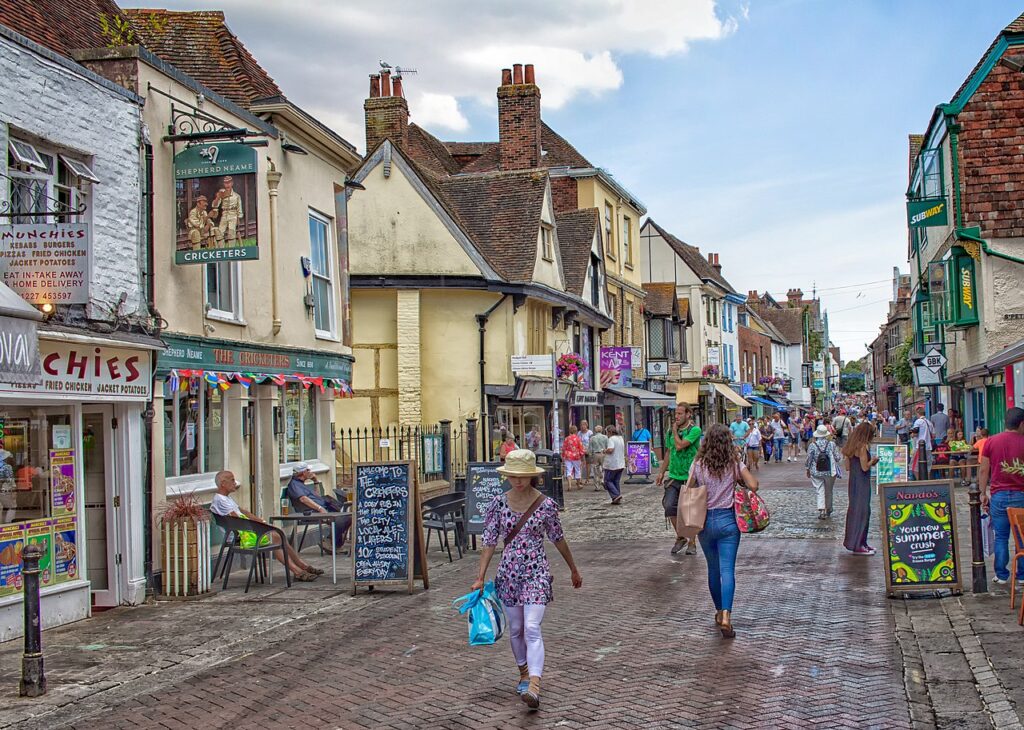
High Street
The narrow, cobbled medieval streets of Butchery Lane and Longmarket branch into broad High Street. Running on a northwest–southeast axis between St George’ Gate and Westgate, this pedestrian thoroughfare is Canterbury’s commercial spine, lined mainly with shops, restaurants and cafés. Distinctly contemporary at its southern end, where you’ll find the Whitefriars shopping centre and other modern buildings, it offers up a more diverse historical character the closer you get to Westgate.
A personal favourite among Canterbury’s superb stock of heritage architecture, is The Beaney House of Art & Knowledge. This combined museum, art gallery, library and tourist information centre is named after the building’s Victorian benefactor, Dr James George Beaney. Hailing from humble beginnings, Beaney made his fortune in Australia and left money in his will for an ‘institute for working men’ to be built in his birthplace of Canterbury. This gorgeous building, with its elaborate façade of mock Tudor brickwork and terracotta, opened in 1898. The sensitively executed modern extension to the rear contains the library, visitor information centre and temporary exhibition spaces.
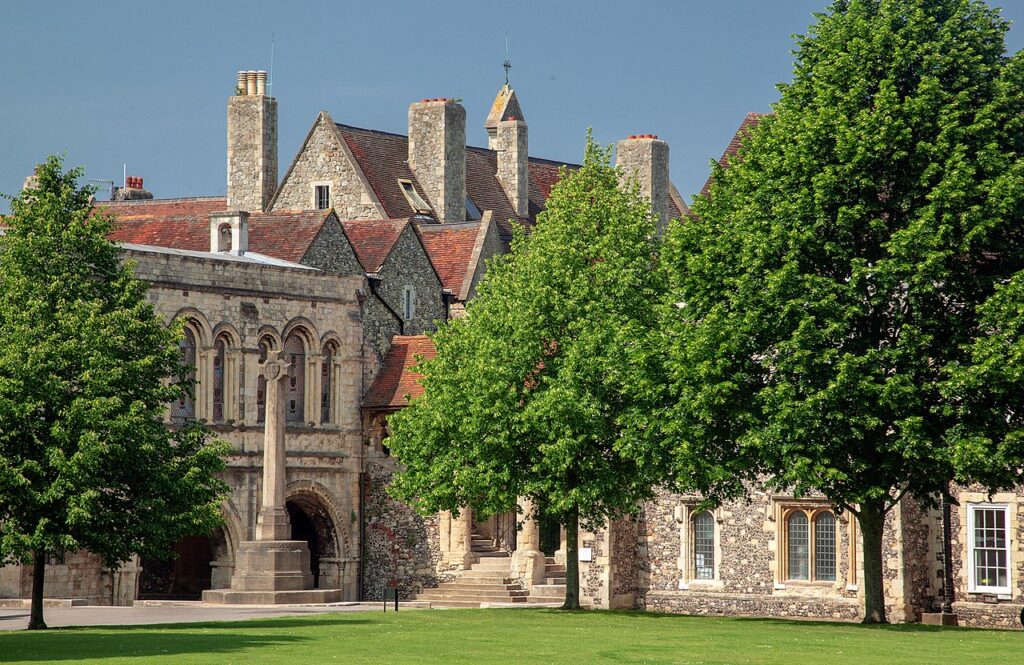
King’s Mile
Rather than a single street, the King’s Mile covers a series of contiguous and neighbouring streets east of the High Street and north of the cathedral. It’s a picturesque district; at its heart is Palace Street, which is dotted with a good range of independent shops, cafés, bars and restaurants.
On the corner of Palace Street and King Street stands Crooked House, a comically wonky, early 17th-century half-timbered building, home now to the charity Catching Lives, second-hand bookshop. Alterations to an internal chimney are believed to have originally caused the structure to slip sideways and it’s thought that the house inspired a description of a lop-sided property in Dickens’ David Copperfield (the quote is inscribed across the building’s façade). Although it looks like it could topple over any second, the building has long since been stabilised internally by a steel frame.
Opposite, at the bottom of The Borough, is a stone gate opening into the section of the cathedral precincts occupied by The King’s School. England’s oldest public school dates back to the cathedral’s foundation and has had Royal Charter since 1541. The playwright Christopher ‘Kit’ Marlow was a student here, along with William Harvey, who discovered the circulation of blood, and the distinguished Tudor gardener John Tradescant. More recent ‘Old King’s Scholars’ include the actor Orlando Bloom and author Michael Morpurgo.
Westgate and Westgate Gardens
An excellent elevated view over Canterbury can be had from the battlements atop the 60ft-tall towers of Westgate. The sole intact survivor of the city’s original seven gates, Westgate is also the largest medieval gate in England, built around 1380 as an extra defence for the city during the Hundred Years’ War. Originally approached over a drawbridge, the gate and the connecting 19th-century buildings of 1 Pound Lane later did service as a gaol and police station.
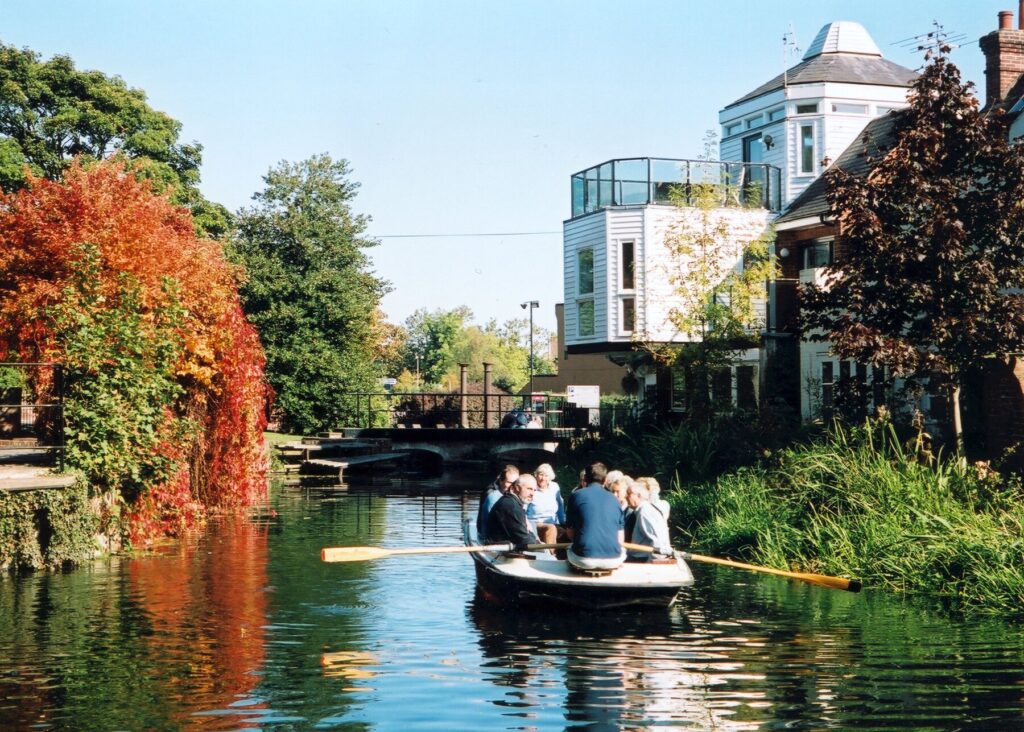
The history of the complex is explained in a small museum within the gate, which is accessed through The Pound Kitchen & Bar which now occupies the old police buildings. A fun way to experience the gate is to sign up to play one of the three Escape Room games here – full details are on the website.
The garden’s most extraordinary feature is a ridiculously chubby Oriental plane tree that is believed to be over 200 years old. A fine walk and cycle route runs through the gardens and along the Stour to the village of Chartham, three miles southwest.
St Dunstan’s Church
Walk five minutes from Westgate to the corner of London Road and St Dunstan’s Street to find this modest-looking church named after a 10th-century Archbishop of Canterbury. Its most famous feature – the remains of Sir Thomas More’s head – lies buried in a lead casket in an underground vault. It was from St Dunstan’s that Henry II commenced his barefoot walk to Canterbury Cathedral on 12 July 1174, the first stage of his public penance for the murder of Thomas Becket. This made the church an important calling point on the journeys of subsequent medieval pilgrims to the cathedral.
On your way to the church, take note of the Roper Gate on the north side of St Dunstan’s Street. This fine example of decorative Tudor brickwork was once the entrance to the long-since demolished 16th-century Place House, home to William and Margaret Roper.
Dover
Few other places in Kent – or England – make as strong an initial visual impression as Dover. Your attention is immediately grabbed by the magnificent medieval castle topping the iconic White Cliffs, a pair of national symbols that pack a mighty punch. However, this is also Europe’s busiest ferry port, with roads designed to shift large volumes of traffic in and out of Dover at speed; it’s hardly the most enticing town in which to linger.
Visitors tend not to explore much further than the two key sights, but there is much more to discover in this most historic of Kent locations, including remarkable Bronze Age and Roman remains and the awesome Napoleonic forts of the Western Heights, hiding in plain sight on the opposite headland to the castle. Hiking a section of the White Cliffs is a given, and for more gentle walks there are parks and gardens to be explored inland at Kearsney and on the coast at Samphire Hoe.
What to see and do
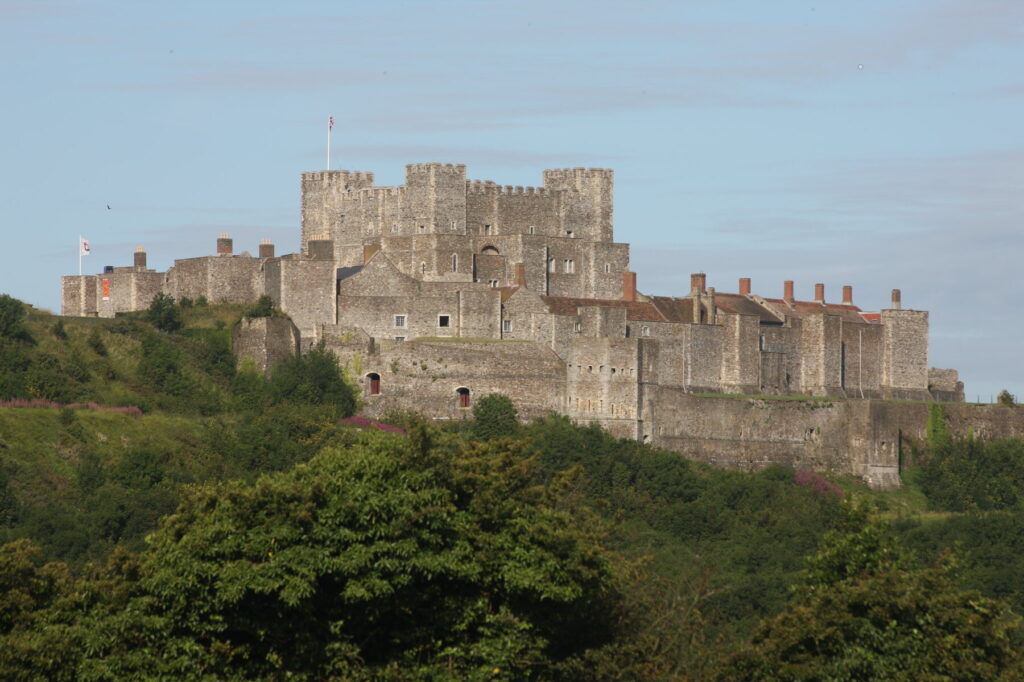
Dover Castle
Since the 11th century this impregnable castle, described as the ‘key to England’, has guarded Dover and served as the ceremonial gateway to the country. Built atop a pre-existing Iron Age hillfort, its 80 acres of grounds encompass a Roman lighthouse, a Saxon church, a recreation of the medieval court of Henry II inside the Great Tower, and a military museum. Burrowed into the chalk beneath the compound are some four miles of tunnels, the first created during the siege of 1216, then more extensive networks dug during the Napoleonic and world wars; troops were stationed here right up until 1958.
To fully explore this fascinating site takes at least half a day; the walk around its extensive battlements, offering panoramic views of the surroundings, is an hour on its own. Tickets are slightly cheaper if booked in advance online, and if you haven’t brought a picnic (recommended), there are a couple of cafés within the grounds.
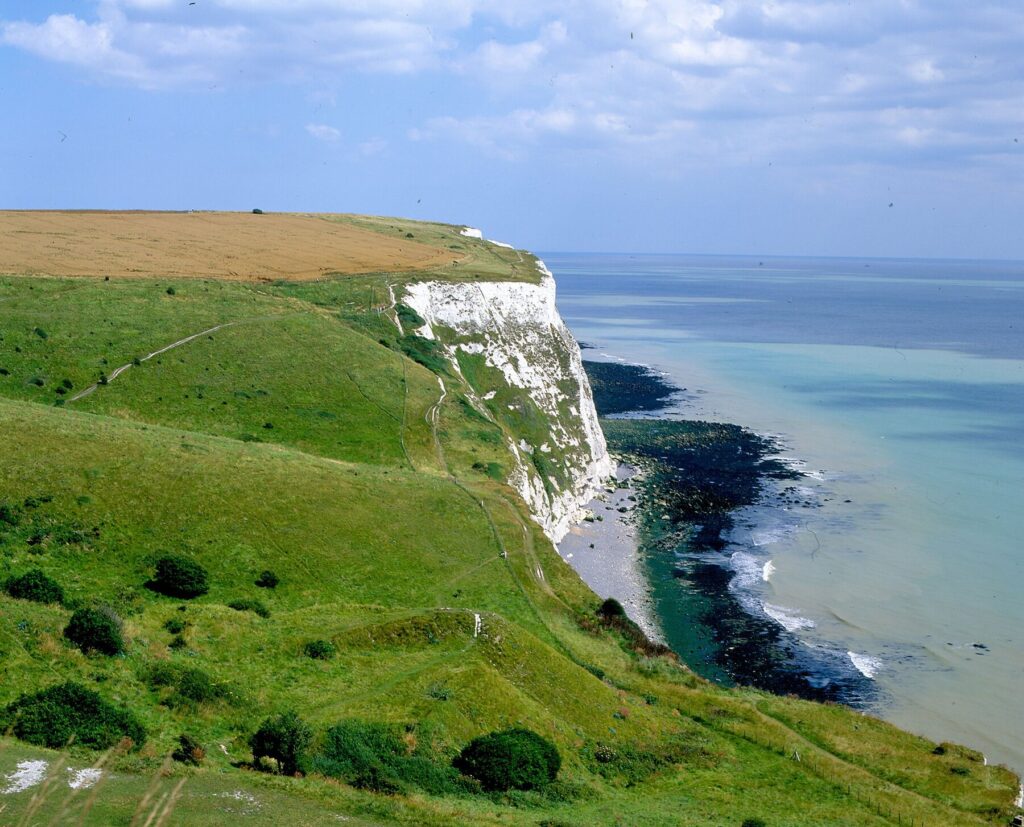
White Cliffs
Reaching a commanding height of 350ft in places and pockmarked by striations of dark flint, Dover’s White Cliffs flank either side of the port. The National Trust, custodians of around six miles of the cliffs, describes them as ‘a symbol of steadfastness, safety and home’. A staunch repulse to invaders, a warm welcome to returning citizens and a wonder of the natural world, they are as symbolic of England as the Eiffel Tower is of France.
Created 66 million years ago when ocean floor deposits were raised above sea level, the chalk cliffs appear monolithic. They were mentioned by Julius Caesar as an impregnable piece of the coastline during his attempts to invade Britain in 55 BC. However, battered by the Channel’s stormy seas and exposed to the elements, the cliffs are fragile, slowly but constantly eroding; occasionally, enormous chunks crash to the sea. No matter how tempting it may be, venturing close to the cliff edges is never advised.
Start exploring this treasured environment from the grass-roofed National Trust visitor centre which blends seamlessly with the greenery around it. The café here offers stupendous views across the Channel. One-and-a-half miles from the visitor centre is the entrance to the Fan Bay Deep Shelter. Climb down 125 steep steps to explore this claustrophobic tunnel complex constructed in between 1940 and 1941 as accommodation for troops operating the gun battery that once existed above. Breath fresh air on the open-air ledge in the cliffs accessed from the tunnels, where there are a pair of concrete ‘sound mirrors’ from World War I.
Town centre
Dover’s town centre is focused around pedestrianised Market Square, in a corner of which is the modern building housing the tourist office and Dover Museum. The highlight at this terrific free museum is the Bronze Age Boat Gallery which displays a remarkably well-preserved section of a boat constructed out of oak some 3,500 years ago and discovered in 1992 by construction workers building a section of the A20 road through Dover.
A short walk west of Market Square, a utilitarian and uninviting building houses the best preserved of several Roman ruins discovered beneath Dover (all the others have been reburied after their initial excavations). Dating from around 200 AD, the Roman Painted House gets its name from the sections of painted plaster remarkably still intact on the ruin’s walls. Once a fine residence for visiting Roman dignitaries, the building was destroyed when Dover’s fort was enlarged in 270 AD. In the process, three of its main rooms were buried intact, the rubble protecting the delicate wall paintings and the building’s hypocaust (underground central heating).
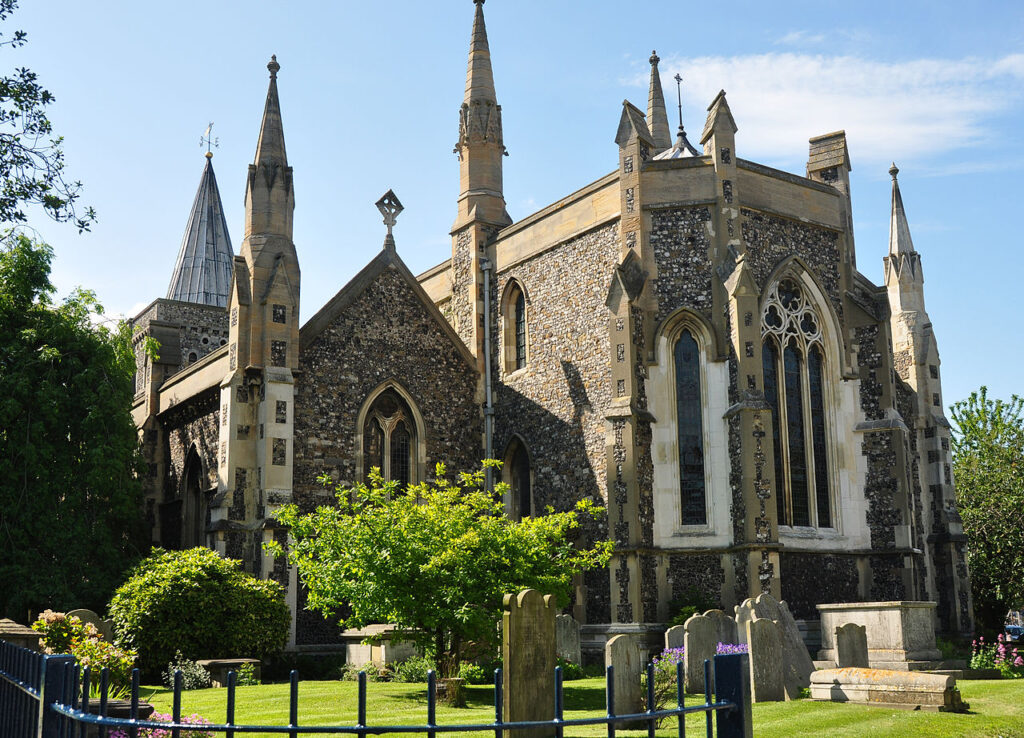
Sitting at an angle to Cannon Street, Dover’s central commercial thoroughfare, is St Mary’s Church, likely one of the three churches in the town mentioned in the Domesday Book of 1086. The main tower mainly dates from Norman times but the rest of the church was largely rebuilt in Victorian Gothic Style. Cannon Street becomes Biggin Street which eventually leads to the Maison Dieu, one of Dover’s most historic buildings with a stunning interior that is undergoing restoration until 2024. On the way back to Market Square, make a detour down narrow St Edmund’s Walk to view St Edmund’s Chapel, built in 1252 and said to be the smallest church in England.
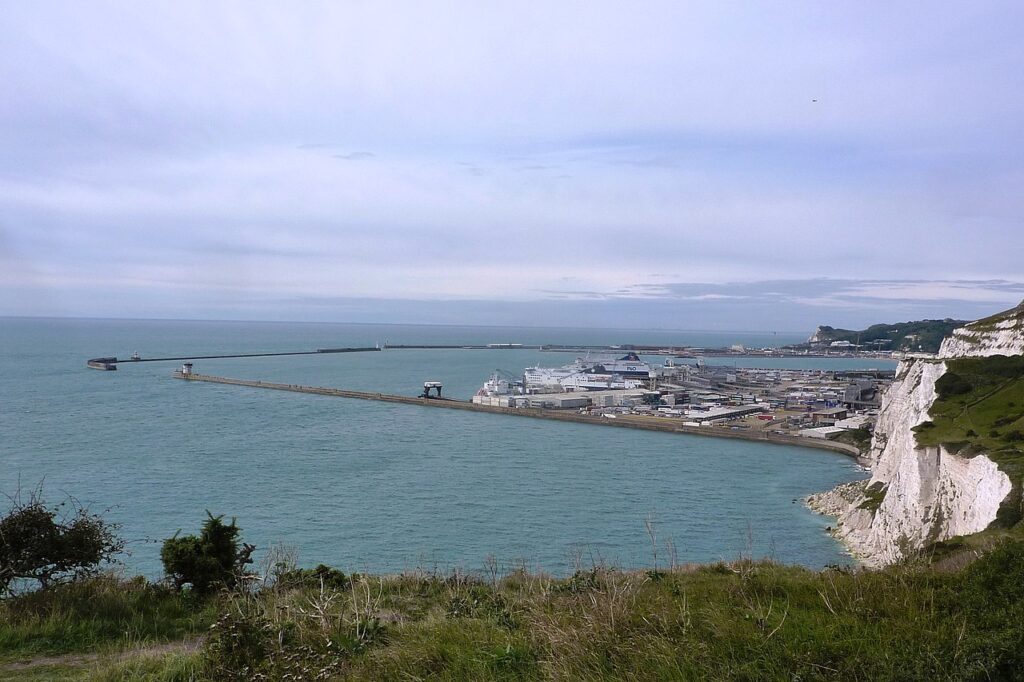
The harbour
Dover’s impressive harbour, with its piers and breakwaters, has evolved over many centuries. It is split into two regions: the Eastern Docks, from where all the cross-Channel ferries operate, and the Western Docks with its outstretched harbour arms providing moorings for enormous cruise liners and cargo ships.
To reach the Western Docks section on foot, keep following the pedestrianised street south from Market Square towards the A2 where an underpass leads across and out into a handsome set of Victorian terraces and the promenade running alongside the shingle beach and harbour. Look down to see the black granite start/finish line for the North Downs Way. To one side is a Sustans Portrait Bench with two-dimensional silhouettes of Olympic torchbearer Jamie Clark, the author Ian Fleming and singer Vera Lynn, cut from CorTen steel.
A pair of concrete plinths rise up dead ahead, each topped with the simplified image of a swimmer – one heading out to France, the other coming into Dover. If you walk east along Marine Parade, in the direction of the ferry terminal, you’ll shortly come to a bust of Captain Matthew Webb – in 1875 he was the first man to swim the Channel unaided. In perhaps the ultimate approach to Slow Travel, it took Webb 21 hours and 45 minutes to swim from Admiralty Pier to Calais. In the century and half since, only just over 2,000 people have successfully matched Webb in tackling what is considered the Everest of sea swimming.
Western Heights
The Grand Shaft is one of Dover’s most remarkable, hidden architectural treasures. It’s a triple helix staircase built into the cliffs between 1806 and 1809 to enable the troops stationed atop the Western Heights to quickly descend to the town. During Victorian times the three intertwined staircases, dropping 140ft, were separately used by different ranks: ‘officers and their ladies’, ‘sergeants and their wives’ and ‘soldiers and their women’.
The shaft is opened to the public by the Western Heights Preservation Society on the third Sunday of the month from March to November between 10.00 and 16.00. The Grand Shaft is impressive, but the ingenious Drop Reboubt nature-encroached remains of the Western Height’s other Napoleonic fortresses, linked by towering brick-lined ditches, will blow your mind.
The bomb-proof pentagonal fortress was made by cutting a deep, wide moat into the hillside. It is perfectly camouflaged against enemy attack and is awe-inspiring in its enormous scale, like an ancient and enigmatic ruin. Occupied by the army up until 1961 and now managed by English Heritage, the grounds are free to explore: the most direct access from town is via the steep set of steps that ascend from the side of atmospheric Cowgate Cemetery behind Albany Place.
The Western Heights Preservation Society run tours inside the fort on the third Sunday of the month from April to September. This is the only way to access the grassy top, where you can see the scant remains of the second of Dover’s Roman pharos (lighthouses).
Dungeness
Treeless, windswept and dotted with weathered wooden homes and shingle-stranded fishing boats, Kent’s private estate of Dungeness is mistakenly called a desert. There’s far too much rain and general biodiversity in this national nature reserve for it to be a true desert but it is nevertheless an extraordinary and unique location.
Sitting atop the largest expanse of shingle in Europe are a pair of lighthouses, a monumental nuclear power station, the cottage and garden of the late film-maker, artist and writer Derek Jarman, and an astonishing array of plants, invertebrates, and birdlife. Featuring as cover art on Pink Floyd’s greatest hits album A Collection of Great Dance Songs, and a location in 1970s episodes of Dr Who, Dungeness is spellbinding in its oddness. It’s a compelling place to linger, particularly for its sunsets which blaze across the panoramic sky in bands of burnt orange and purple.
What to see and do in Dungeness
Old Lighthouse
The most fun way of arriving here is on the dinky Romney, Hythe and Dymchurch Railway which terminates next to the black-painted Old Lighthouse. Since 1615 eight lighthouses have been erected at Dungeness – five high and three low; this 150ft brick tower, completed in 1904 and in use until 1960, was the fourth of the high ones. From the balcony surrounding the light at the top, reached by 165 concrete steps, you’ll get a good view of its successor, jutting up out of the shingle in black and white painted bands.
RSPB Dungeness Reserve
An access track off Dungeness Road leads to the RSPB Dungeness Reserve which covers nearly four square miles of the Dungeness National Nature Reserve. The two-mile long circular main trail starting at the visitor centre goes past six hides from which you may spot, among many other species, cormorants, marsh harriers and, in spring, bitterns.
The RSPB also look after the former sand and gravel pits at Lade, just north of Dungeness, location of the three Denge Sound Mirrors, monumental concrete listening devices from the 1930s. This area can be accessed on foot from Taylor Road, Leonard Road or Seaview Road in Greatstone. Avid birdwatchers may also want to reach out to Dungeness Bird Observatory which keeps a detailed online blog on the region’s wildlife (not just the birdlife) and offers dormitory-style accommodation.
Galleries
Providing a brooding backdrop to the landscape is the monolithic nuclear power station, made up of two no-longer-functioning reactors which are in the decades-long process of being decommissioned. Scattered across the shingle are around a hundred homes, many now holiday lets. Some of the buildings are converted railway carriages from the 1920s and include the Dungeness Gallery which occupies three vintage Edwardian carriages and showcases the works of photographer Chris Shore and watercolour artist Helen Taylor. The artist studios of Helen Gillilan is also open for visits, as is that of Paddy Hamilton, a talented painter and printmaker, whose Dungeness Open Studios comprises four quirky, small spaces standing in an attractive shingle garden.
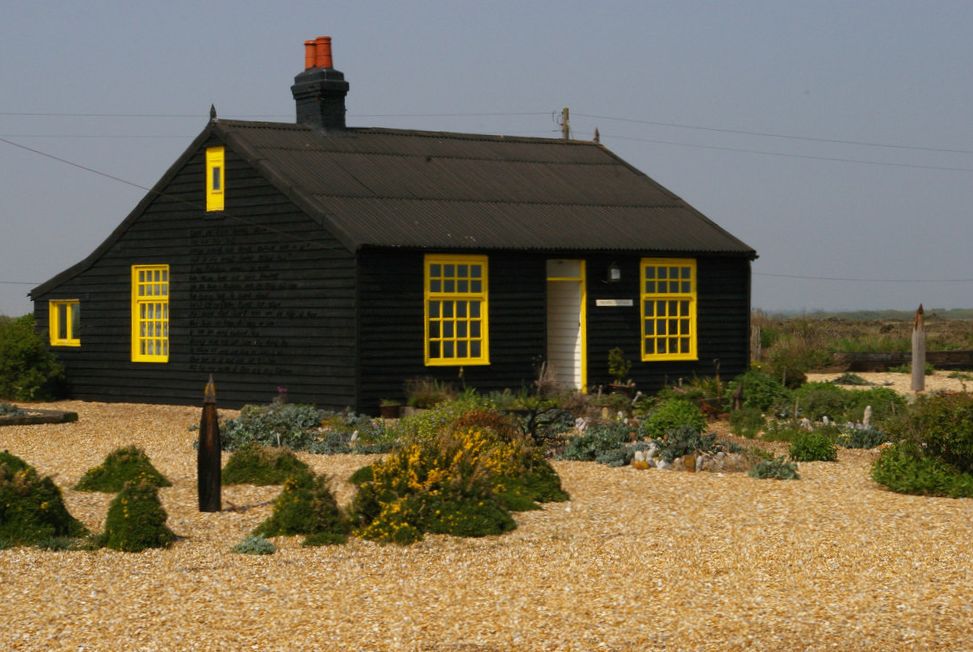
The village’s most famous creative resident was film director Derek Jarman, who owned Prospect Cottage, around which he created a remarkable dry garden, as much an art installation as it is a collection of plants. The mingling of hardy grasses, red California poppies, yellow sedum and glaucus sea kale, with enigmatic sculptures crafted from rustic hunks of driftwood, rusting metal and large mottled pebbles is wonderful. The wooden cottage, weatherproofed with black tar, has a sunshine-yellow painted door and window frames.
One wall is covered with raised relief lines, in the style of Jarman’s handwriting, from the poem The Sun Rising by John Donne. It’s a testament to Jarman’s unique vision at Prospect Cottage, that in 2020, 26 years after his death, £3.6 million was raised to buy the cottage for the nation and keep it preserved much as he had left it. Visitors are free to explore the borderless garden which merges with the shingle. Creative Folkestone have been entrusted to take care of the property and open it for small group guided tours and for special events.
Faversham
Home to one of the largest architectural conservation areas in the UK, Faversham owes its long prosperity to its sheltered position on a sea creek that winds inland from the Swale. Bricks, grain and gunpowder were all shipped from the port here and countless vessels were built in its shipyards.
Meaning ‘metalworkers’ village’, Faversham was a royal town during Anglo-Saxon times and its market – one of the oldest in England – is mentioned in the 1086 Domesday Book. In 1148 King Stephen founded an abbey here which rivalled those in Canterbury and Rochester. However, the abbey was destroyed during the Reformation, and with it the graves of King Stephen, Queen Matilda and their eldest son Eustace.
What to see and do
With over 400 listed buildings intact, Faversham remains a visual feast in Kent that is a joy to explore on foot. It also has a scrumptious food and drink scene, including England’s oldest brewery, and will appeal to those who love to rummage around antique shops and street markets.
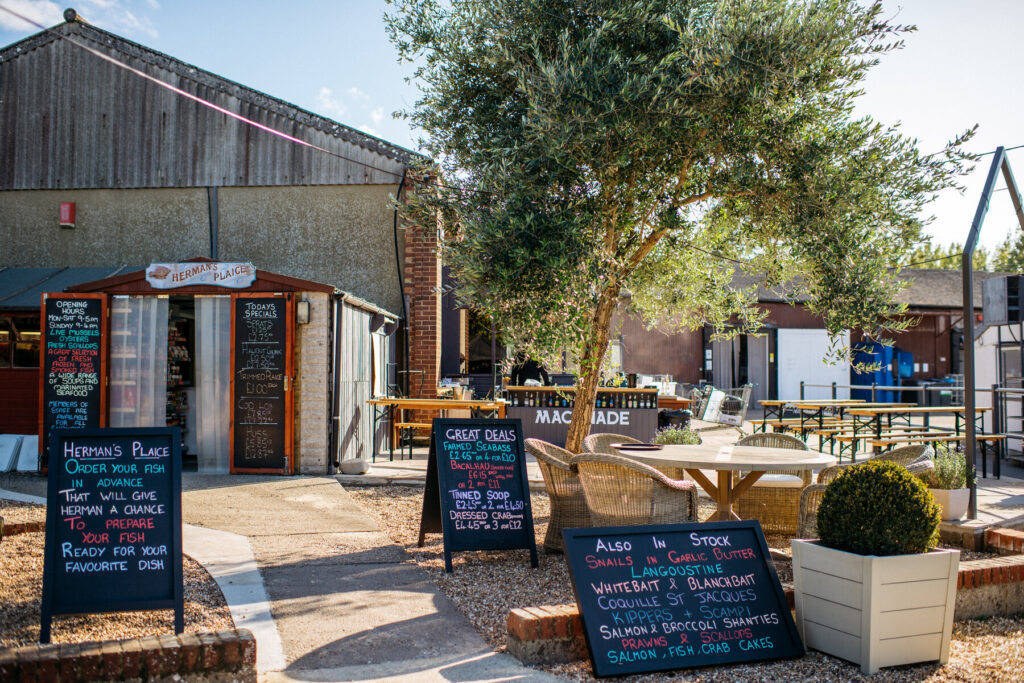
For a greater appreciation of Faversham’s rich history and pointers on all things of interest in town, start your explorations at the Fleur de Lis Museum. Around a five-minute walk from the train station, the fascinating, artefact-stuffed displays are arranged inside a 15th-century building that was once a pub.
At the end of Preston Street, turn left to reach Market Place, at the head of which stands the mint-green Guildhall. The ground floor, with its timber arcades and octagonal columns, has been used by market traders for more than 500 years. The upper part of the building, including a clock tower and cupola, dates from 1814 when the hall was rebuilt after a fire.
Officially founded in 1698, but with roots dating back to the brewhouse at Faversham’s medieval abbey, Shepherd Neame is a cornerstone of the town’s economy, producing over 60 million pints of Kentish ales, lagers and ciders per year. The starting point for brewery tours is the Shepherd Neame Visitor Centre which occupies a beautifully restored medieval building with timber beams at the Court Street end of Market Place. The tours, which last around 80 minutes, take participants through all the processes in the brewery and culminate in an expert-led tasting of six ales. Most Fridays and on the second Wednesday of the month, an evening tour of brewery tour is combined with a two- course meal in the Visitor Centre bar. Come wearing covered, flat shoes as you’ll be walking through a working brewery and across slippery cobbles and surfaces.
At the junction with Quay Lane, Court Street becomes Abbey Street, which – as its name implies – once led to Faversham’s medieval abbey. Many fine heritage buildings line this street including, at number 80, Arden’s House. What was once the abbey’s outer gateway and guesthouse is named after Thomas Arden; a plaque notes how this one-time mayor of Faversham was murdered in the house in 1551, the victim of a plot instigated by his faithless wife and her lover. The events inspired the play Arden of Faversham which is rumoured to have been penned by Shakespeare.
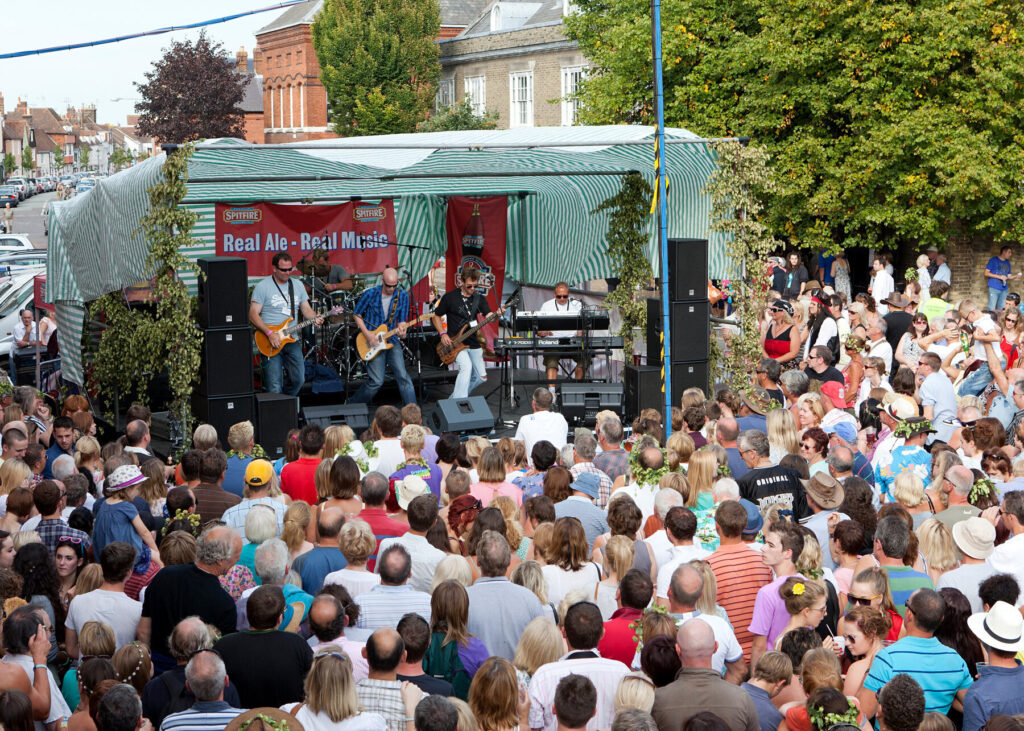
The abbey’s grounds once extended for eight acres, west out to Faversham Creek and south to St Mary of Charity Parish Church. Even though it’s off the main street, you can’t miss this large church because of its late 18th-century corona spire, soaring above Faversham’s roofline. Inside, a unique feature is the octagonal pillar in the nave’s northeast corner that’s been painted with an early 14th-century mural featuring ten scenes from the life of Christ.
In the church’s south chapel is an ornately carved but unnamed tomb, said by some to contain the bones of King Stephen. Bordering the church yard is the organically managed Abbey Physic Community Garden which offers lessons in gardening and healthy eating. This walled garden is a serene spot in which to enjoy the flowers, plants and wildlife.
Folkestone
The Kent town of Folkestone is blessed by its geography: the North Downs protect the town’s rear; an undulating strip of shingle and sand beaches is bisected by a picturesque harbour at East Wear Bay; while to the west, a lush park offers south-facing seaside and clifftop views across to France.
What to see and do in Folkestone
The Bayle
Before hitting the beaches and harbour, head to The Bayle, one of the oldest parts of Folkestone. To reach it, head for the east end of Sandgate Road; the town’s main commercial artery may be far from inspiring but along it are glimpses of Folkestone’s illustrious past in buildings such as Folca, built in the 1930s as the department store Bobbies.
At the junction with Guildhall Street is the well-presented Folkestone Museum, occupying part of the handsome town hall that dates from 1861. The eclectic collection, over two floors, ranges from prehistoric fossils to a Victorian painted silk parasol. A highlight is the 1915 canvas Landing of the Belgian Refugees by Fredo Franzoni, depicting Folkestonians opening their arms to World War I refugees. In 2019, some 300 locals gathered at the harbour to recreate the image as a large-scale photograph, also part of the museum’s collection, as a demonstration of the town’s continued welcome to those fleeing conflict and persecution.
On walls around the district, information panels installed by the local residents’ association, provide insight into The Bayle’s history.
Creative Quarter
A set of stone steps from the Bayle connects directly to the steeply raked and cobbled Old High Street – one side of a rough triangle bounded by Rendezvous Street and Tontine Street that constitutes the Creative Quarter. Ground zero for Folkestone’s embrace of the creative industries over the last two decades, many of the zone’s brightly painted buildings are rented out to artists, craftspeople and small businesses. Alongside artist studios such as the Stables, small galleries like CT20, and quirky and boundary-pushing arts venues like DIY4FOLKE are cafés, bars and independent shops. There’s also plenty of public works of art, including Banksy’s Art Buff along the Old High Street, on the wall next to the bar Folklore.

At the top of the park nearby, where it joins with the Old High Street, look for the Pocket Gallery atop a blue-painted post in the community garden; exhibitions in this tiny space change every three weeks. On a much more monumental scale is F51, the world’s first multistorey skateboarding park with facilities also for BMX, climbing, bouldering and boxing, as well as a café. It’s an extraordinary building, designed by Guy Hollaway Architects, wrapped in perforated aluminium panels and containing giant, suspended concrete skating bowls, as well as the largest lead climbing wall in southeast England.
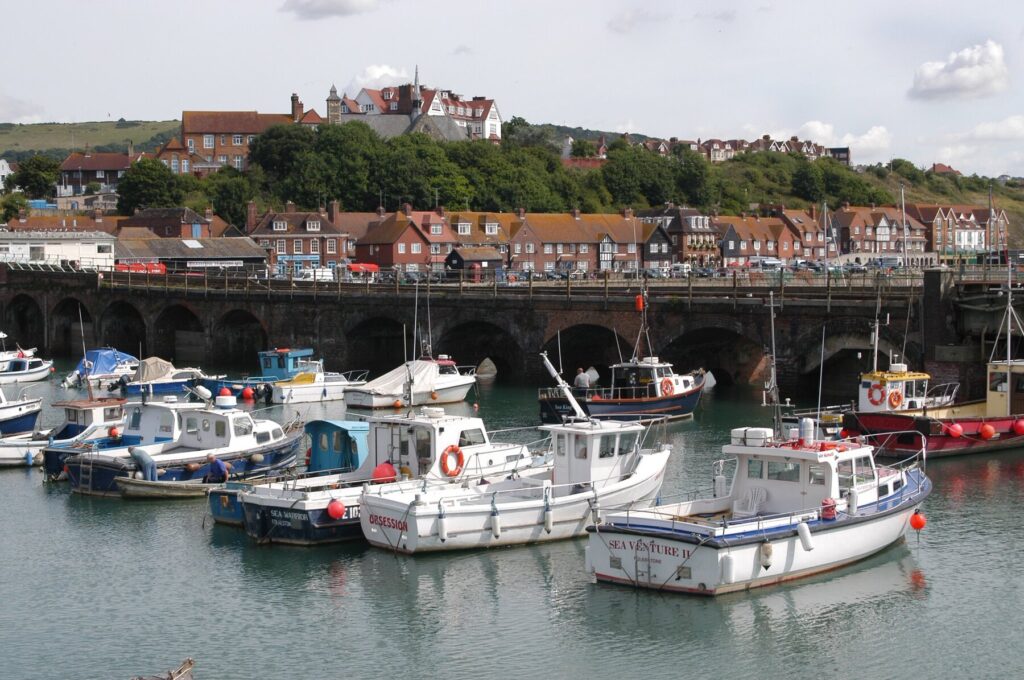
Folkestone harbour
The harbour, bobbing with a small flotilla of fishing boats and pleasure craft, is split in two by the former railway viaduct bridge, now landscaped into a flower-planted walkway to the Harbour Arm. Henry VIII considered building a harbour at Folkestone in 1541 and for several centuries the town was also a limb of the Cinque Port of Dover. In 1842, the South Eastern Railway Company took over the harbour, subsequently constructing a branch line out to the pier, which had been completely rebuilt in concrete and granite by 1904.
This quarter-mile-long extension into the sea is the Harbour Arm which in its contemporary iteration has become a place where Folkestonians come to eat, drink, fish, watch live music and films, attend events and promenade out to the lighthouse at its tip, also the venue for a champagne bar.
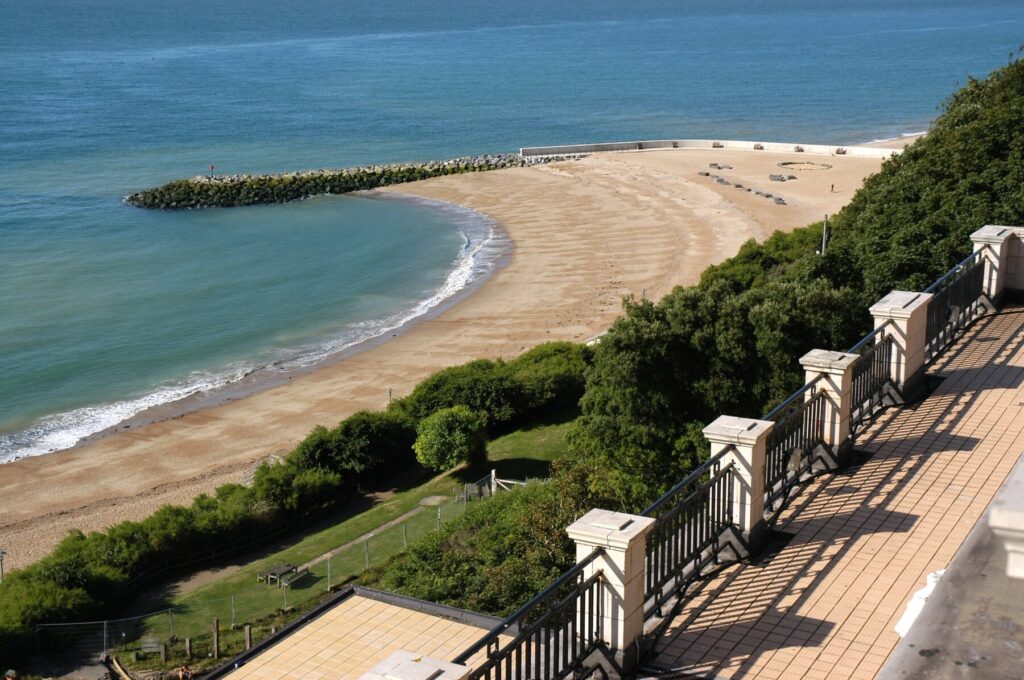
The Leas and Lower Leas Coastal Park
Snaking west along the shingle beach from the Harbour Arm, a pathway made of reclaimed wooden railway sleepers leads to the award-winning Lower Leas Coastal Park. Containing a green amphitheatre and a superb kids’ play area including a wooden pirate ship, giant spider and zip lines, this lush park with meandering paths tumbles down the hillside to shingle beaches sheltered by granite groynes.
The Lower Leas runs parallel with the upper Leas promenade, laid out in 1843 by Decimus Burton, the designer of Hyde Park and buildings at Kew Gardens. The two are linked by steps and footpaths, including the gently sloped Zig Zag Path that starts near Leas Bandstand, where concerts are held in the summer months. A listed structure, the path is a very believable replica of natural cliff faces and grottos, made from waste material coated in special a cement called Pulhamite, after its creator James Pulham.
East Cliff
Beyond the East Head of the harbour is Sunny Sands, Folkestone’s only truly sandy beach, overlooked by Cornelia Parker’s The Folkestone Mermaid, a bronze sculpture lifecast from local resident Georgina Baker. Steps up the hill at the beach’s far eastern end lead to East Cliff, a grassy headland with superb views across the harbour. The squat round structure atop Copt Hill here is one of 16 remaining Martello Towers out of 27 built along the southern Kent coast in the early 19th century as defensive forts when fears of an invasion by Napoleon were at their height. Folkestone has three of these towers (four if you count the ruined one at the far western end of The Leas) with the first two, also in the East Cliff area, converted into private homes.
A pitch-and-putt golf course surrounds the tower and there also public tennis courts. Nearby archaeological digs have uncovered remains going back as far as 10,000 BC, with the most significant find being that of a large Roman villa built around 100 AD. The remains of the villa have been turfed over, but a selection of finds from the site are on exhibition in Folkestone Museum.
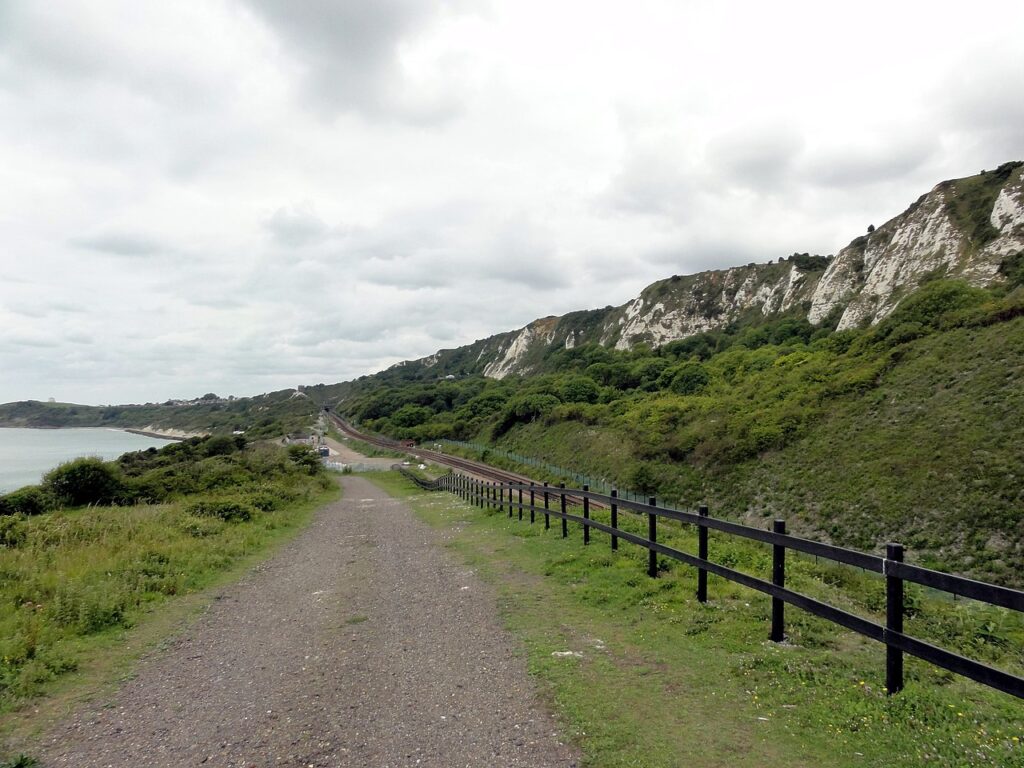
The Warren
Accessed down a narrow hillside road veering off from Wear Bay Road, the Warren is Folkestone’s magnificently wild frontier. Just under two miles long and covering nearly 740 acres, this undulating undercliff, rich in plants and wildlife, tumbles down to a mostly sandy beach that is littered with fossils. It’s a landscape formed by landslides, caused by powerful geological forces acting on the soft, erodible bedrock of Lower Greensand and Gault clay, which is overlaid with chalk.
The most notable landslide of recent years was that of 1915, one so destructive it closed the railway line between Folkestone and Dover until 1919. Engineering works in order to mitigate further erosion were completed in the mid 1950s, creating a promenade, sea wall and broad concrete skirt along the Warren’s coastline.
Margate
The artist J M W Turner, who spent many happy years in Margate, once told the critic John Ruskin: ‘The skies over Thanet are the loveliest in all Europe.’ Witness the sunlight filtering through the clouds and casting glitter across the sea and you will be hard pressed to disagree. Raffishly louche, artily bohemian and democratic in its many sensory pleasures, Margate epitomises the boom, bust and boom again cycle of Kent’s seaside resorts.
Like many of Kent’s seaside towns, Margate languished as the new millennium approached and it’s still tackling ingrained problems of poverty and deprivation. However, the resort’s general revival since the opening of the Turner Contemporary gallery in 2011 has been remarkable, and cheap property prices have tempted many creative and entrepreneurial types to ditch London in favour of a relaxed seaside life. The Old Town and Northdown Road, which runs through the neighbouring suburb of Cliftonville, are both hives of activity, packed with appealing places to eat and drink, boutiques selling vintage jeans and retro light fittings, and small galleries exhibiting works by up-and-coming artists.
What to see and do in Margate
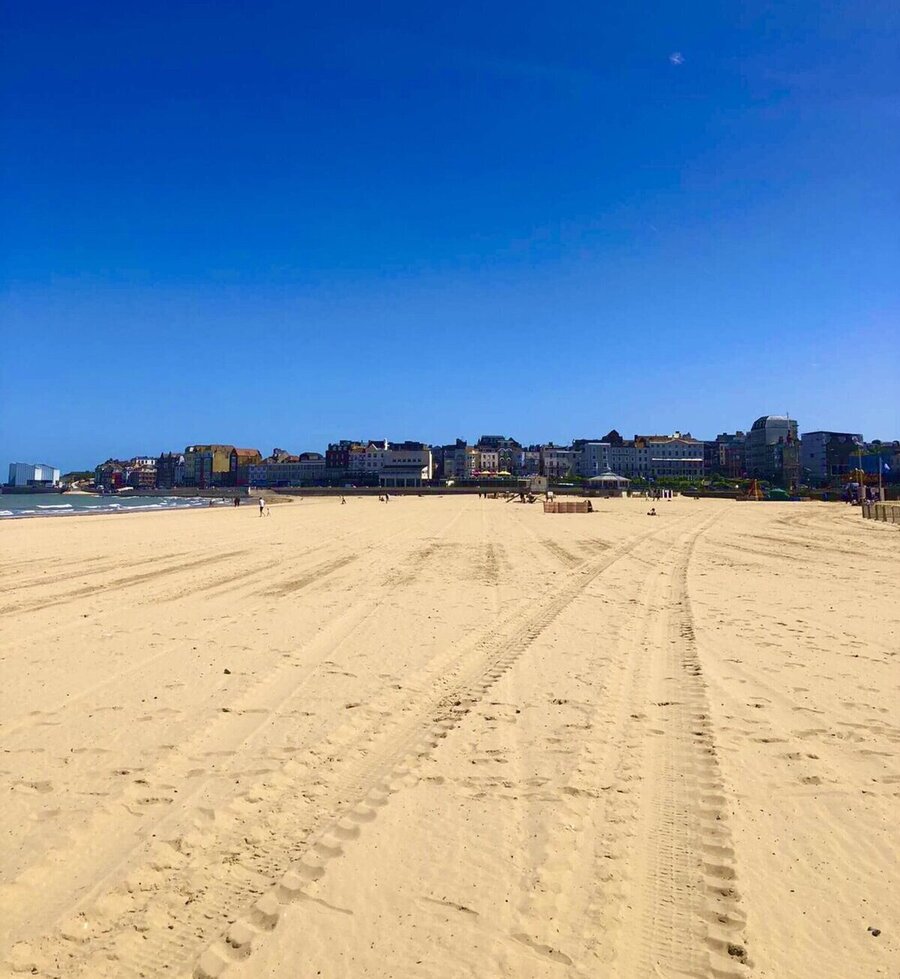
Relax on the beaches
Directly opposite the train station and spanning a gently curved bay is Margate’s main beach, which includes a tidal swimming pool. Take in the scene from the Nayland Rock promenade shelter, a Grade II-listed Victorian structure where TS Eliot is believed to have drafted some lines of his poem The Wasteland. For Eliot, who was recovering from a nervous breakdown at the time, Margate Sands was a place where he could connect ‘nothing with nothing’. Hopefully, your impressions will be nowhere as near as bleak.
If Margate’s Main Sands are too busy for you, alternatives are just short walks away in either direction. Heading west will bring you first to Westbrook Bay, a great family beach that’s also patronised by windsurfers and waterskiers. The promenade is lined with bathing huts, a handful of drink and food stalls and an 18-hole minigolf course. Next along are the golden sands at St Mildred’s Bay and West Bay, both of which can easily be accessed from Westgate-on-Sea train station.
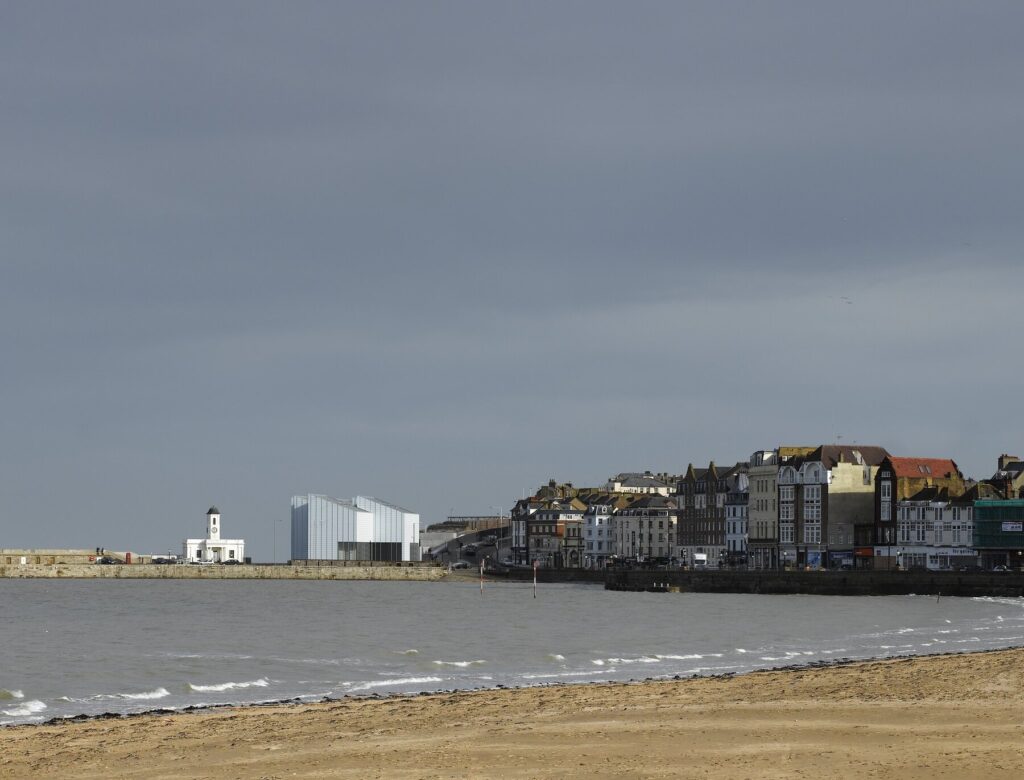
Explore the town’s artworks
Art lovers in search of creative stimulation need only cast their eye around the gently stepped sea defences and across the sands to the geometric form of the Turner Contemporary. Designed by David Chipperfield, this gallery is credited with kickstarting Margate’s revival. It takes its name from the celebrated Victorian painter who used to stay at a guesthouse that once stood on the same site. Works by Turner – often ones he completed in and around Margate – are regularly on display in the gallery, sparking a lively artistic conversation with the regularly changing and expertly curated contemporary works also exhibited here.
The gallery’s panoramic, sea-facing windows provide an ideal frame for Antony Gormley’s Another Time, which stands on Fulsam Rock on the seashore. One in a series of 100 solid cast-iron sculptures by the artist, it has stoically endured Margate’s rising and falling tides since 2017 and is scheduled to stay until at least 2030. If the tide is out, walk across the sand and seaweed slathered rocks for a close-up view of this barnacle encrusted figure.
Before heading inland, take a look at a couple of other public artworks. I Never Stopped Loving You is a neon sign by Tracey Emin who grew up in Margate and has returned to live and work in the town. It hangs over the entrance to Droit House, which now houses the tourist information centre but which was once the harbour customs building. At the end of the curving stone pier, known as the Harbour Arm, is a tall, brass sculpture of a lady made from seashells.
Mrs Booth, by Ann Carrington, is a homage to Sophia Booth, the twice-widowed Margate landlady with whom Turner had a long love affair. The Harbour Arm is lined with bars, cafés and galleries and a walk along it to the lighthouse at the end provides wonderful views out to sea and back towards the town.
Stroll through the Old Town
From the Turner Contemporary it’s a very short walk into Margate’s Old Town, an attractive quarter of tight-knit Georgian and Victorian buildings, most now turned into cafés, restaurants and shops. Here you’ll find the town’s oldest building, Tudor House, a half-timbered beauty dating back to 1525. The original owners were clearly wealthy as the house sports unusual features for its time, including glazed windows and two chimneys. The house is not often open, but the low surrounding walls permit views across into its Tudor knot garden and box hedge squares.
There’s a chance to learn about Margate’s history in the Margate Museum which is housed in the old Town Hall, a building that also served as a Victorian police station and magistrates’ court. The exhibits cover a broad range of local topics from sea bathing machines and donkeys on the beach to artworks that trace the town’s development from a humble fishing village to the holiday resort it is today.
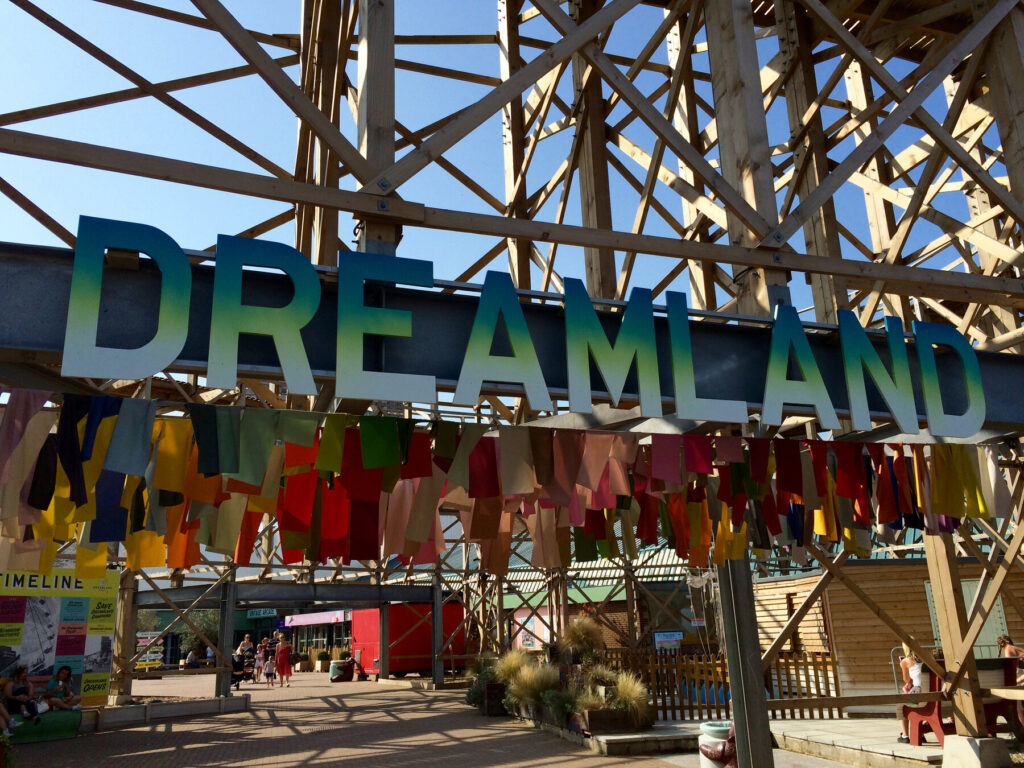
Ride the rollercoasters at Dreamland
Dreamland has been entertaining with its classic fairground rides and amusement arcades for over a century. John Henry Iles spent the equivalent of £15 million in developing the original park, which has gone through several iterations during its lifetime.
The star of the show remains the Scenic Railway, the UK’s oldest rollercoaster, which opened along with the amusement park in 1920. There’s also dodgems, waltzers, a ghost train, roller disco and much more. Entry to the park is free with fees for each of the attractions.
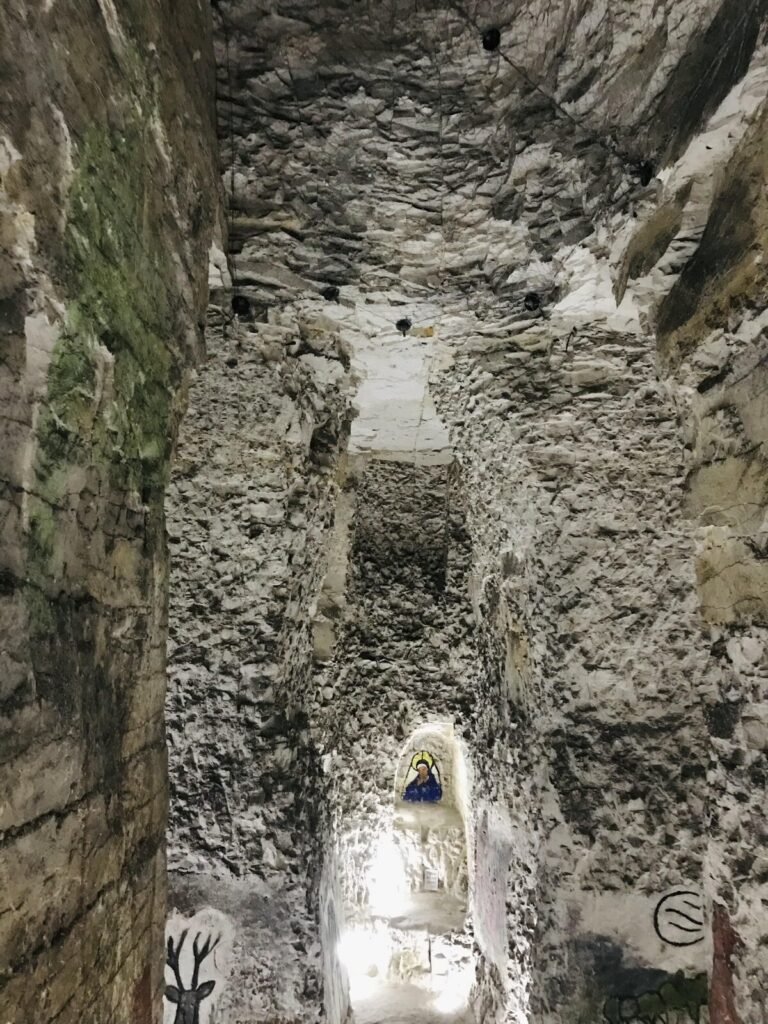
Go underground at Margate Caves
The intriguing Margate Caves can be reached by walking up Northdown Road from the Old Town. ‘The most surprising discovery of the age!’ proclaimed posters promoting this attraction to Victorians as the Vortigen Caves in 1863. Said to date to 454 AD, these underground caverns were in reality an early 18th-century chalk mine that had been covered over and forgotten.
Rediscovered in the early 19th century, their potential as a tourist attraction was given a boost by the addition of colourful paintings of soldiers, wild beasts and a hunting expedition across the towering chalk walls. Local art students added the Virgin Mary and a fluorescent Thanet Giant to these images in the 1950s. The caves closed in 2004 but, following a campaign to have them reopened, they have been made fit as a contemporary attraction – this time with accurate and fascinating historical interpretation in the award-winning visitor centre and café that sits above ground.
Immerse yourself in mystery at Shell Grotto
While the history of the Margate Caves is well documented, mystery swirls around Margate’s second subterranean attraction which lies about a ten-minute walk away. There are far more questions than answers about the Shell Grotto which, so the story goes, was discovered by chance in 1835 under the garden of a residential cottage. Smaller and more compact than the Margate Caves, the chalk tunnels and underground rooms here are entirely plastered in decorative patterns and symbols created from seashells.
Was it a rich 18th-century gentleman’s secret hobby project or an even older pagan site of worship? No-one knows for sure. Nor can it be explained how some 4.6 million British shells were spirited here to create the elaborate wall designs. Dubbed ‘one of the world’s wonders’ by popular Victorian novelist Marie Corelli, the grotto is perhaps best appreciated as an eye-boggling piece of installation art, rather than as an enigma to be solved.
Where to eat and drink in Margate
Margate’s restaurant, bar and café scene is booming. As well as great seafood, including exciting updates on that old seaside staple of fish and chips, there’s a globe-trotting mix of cuisines available here, from Cambodian dumplings to South African curries.
Angela’s
Book well ahead for this pocket-sized restaurant with a view across to the Turner Contemporary. They offer a daily changing menu of ethically sourced seafood and organic vegetables, including ones from the kitchen garden at Quex Park’s Powell-Cotton House.
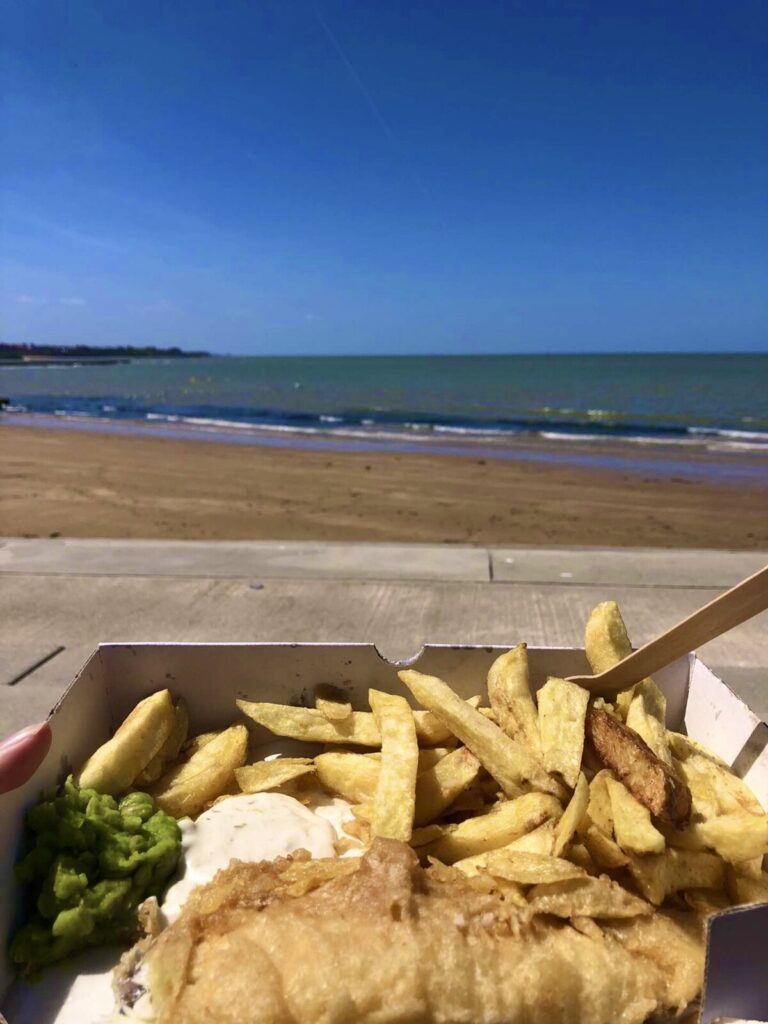
Beach Buoys
An inspired contemporary take on the fish ’n‘ chippie. Indulge your deep-fried cravings with a local skate wing or beer-battered banana blossom which is marinated overnight in miso and flakes just like fish. Three choices of chips (proper, skinny and sweet potato), toppings such as crab and yuzu, plus the option of gluten-free batter just add to the appeal.
Fez
Every surface of this eye-catching bar is covered by vintage and retro bits and pieces including a barber’s chair from Chicago, a pinball machine table and an old Waltzer ride carriage that’s now booth seating. Get chummy with equally characterful locals sipping on pints of real ale, cider and a choice of 35 gins.
Getting there and away
By train
All the main resort towns of Thanet easily accessible by rail – it’s by far the best way to reach and travel around this northeast corner of Kent. Direct trains from London St Pancras provide direct connections to Margate (1 hour 28 minutes). For schedules and fares see southeasternrailway.co.uk.
By bus
Stagecoach run bus services along the Loop, a frequent service connecting Margate, Broadstairs and Ramsgate.
By bike
You can circumnavigate the Isle of Thanet, from Reculver to Ramsgate across country, and then back again around the coast via Margate on the 32-mile Viking Coastal Trail (Regional Cycle Network 15). National Cycling Route 1 passes through Sandwich, Deal and Walmer.
Sissinghurst
The Kent village of Sissinghurst, 17 miles east of Tunbridge Wells and five miles south of the nearest train station at Staplehurst, is famous for the inspirational gardens laid out around the Tudor-era house Sissinghurst Castle.
It’s also close by the attractive village of Biddenden with its row of half-timbered medieval houses down one side of the main street that were once used for weaving cloth by Flemish artisans who settled in the area during the reign of Edward III; and Cranbrook where the Union Mill, a smock windmill built in 1814, stands atop a hill, its brilliant white sails and upper section a guiding beacon above the old market town’s roofline.
Sissinghurst Castle and Garden
Having taken no interest in gardening before her marriage in 1913 to the diplomat and diarist Harold Nicholson, the writer Vita Sackville-West proved to have remarkably green fingers. The couple had already worked together on an experimental garden at Long Barn near Knole, Vita’s ancestral home. When they bought Sissinghurst Castle in 1930 they were ready for an altogether more epic project.
The estate, which had roots as a Saxon pig farm, was in Vita’s words ‘squalid to a degree’ with ‘a tangle of weeds everywhere.’ It took three years of clearing before planting of the garden could begin, its overall design conceived by Harold. The result is one of the high-water marks of 20th-century British garden design, a magnet for garden lovers from around the world, and a pure pleasure for any visitor.
Sir John Baker, one of Vita’s ancestors, built Sissinghurst’s original castle around a pair of courtyards in the 1530s. It did service as a prison for 3,000 French sailors in the mid 18th century, an experience so traumatic for the property that two-thirds of it had to be demolished afterwards. This left mainly the long Elizabethan gatehouse, a moat and a separate brick tower which Vita would later make her private sanctum. Climb to the top of this tower to gain a bird’s-eye view of the garden’s five-acre layout – a series of mainly colourblocked and themed ‘rooms’ separated by neatly clipped hedges and old brick walls, punctuated by openings that allow tantalising glimpses of what lies beyond.
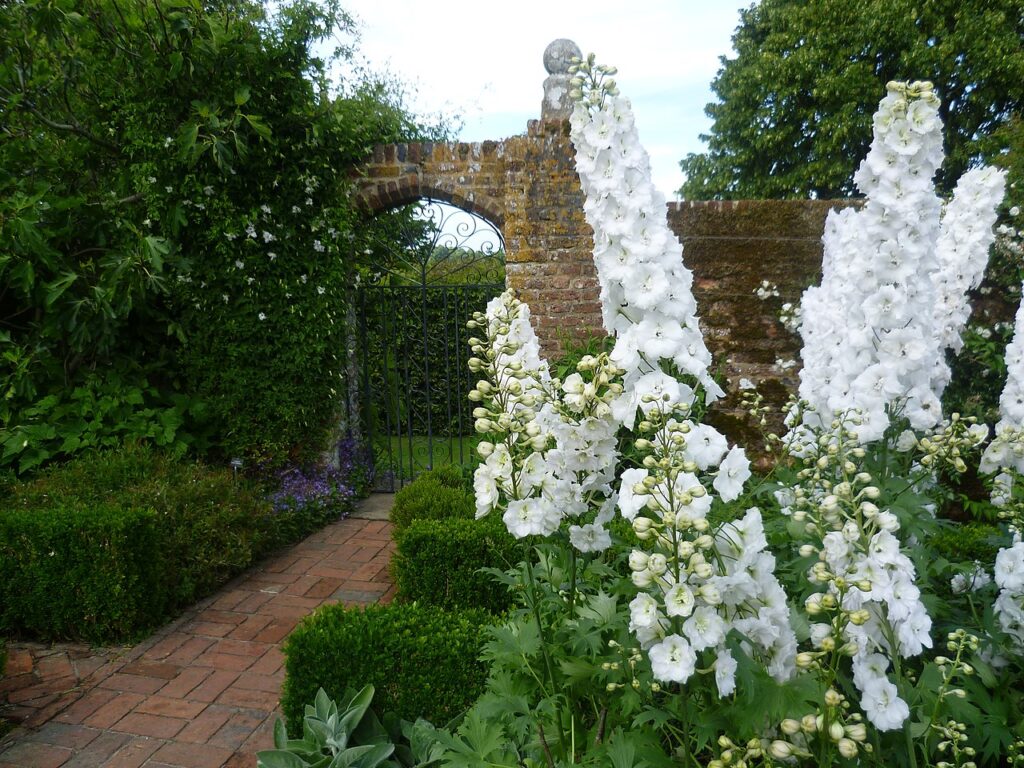
The renowned White Garden, as its name suggests, is planted with gladioli, irises, pompom dahlias and Japanese anemones, all in various shades of white. The Rose Garden has one of the world’s finest collections of old garden roses and is a heady sensory delight when they bloom in late June. In the South Cottage Garden, look out for the early-summer-flowering rose Mme Alfred Carriere; it was planted at Sissinghurst by Vita and Harold, on the day their offer to buy the property was accepted. The South Cottage is where Harold had his study and library and where Vita arranged cut flowers – the rooms here have been respectfully preserved, as has the Long Library occupying part of the gatehouse.
At every turn it is astounding what the self-taught couple achieved, but it’s worth noting that, with the likes of Edwin Lutyens and Gertrude Jekyll as their friends, the Nicholsons did have the best horticultural and landscape expertise to call on. Vita and Harold first opened the gardens to the public in 1938 and the entire 460-acre estate was handed over to the National Trust in 1967.
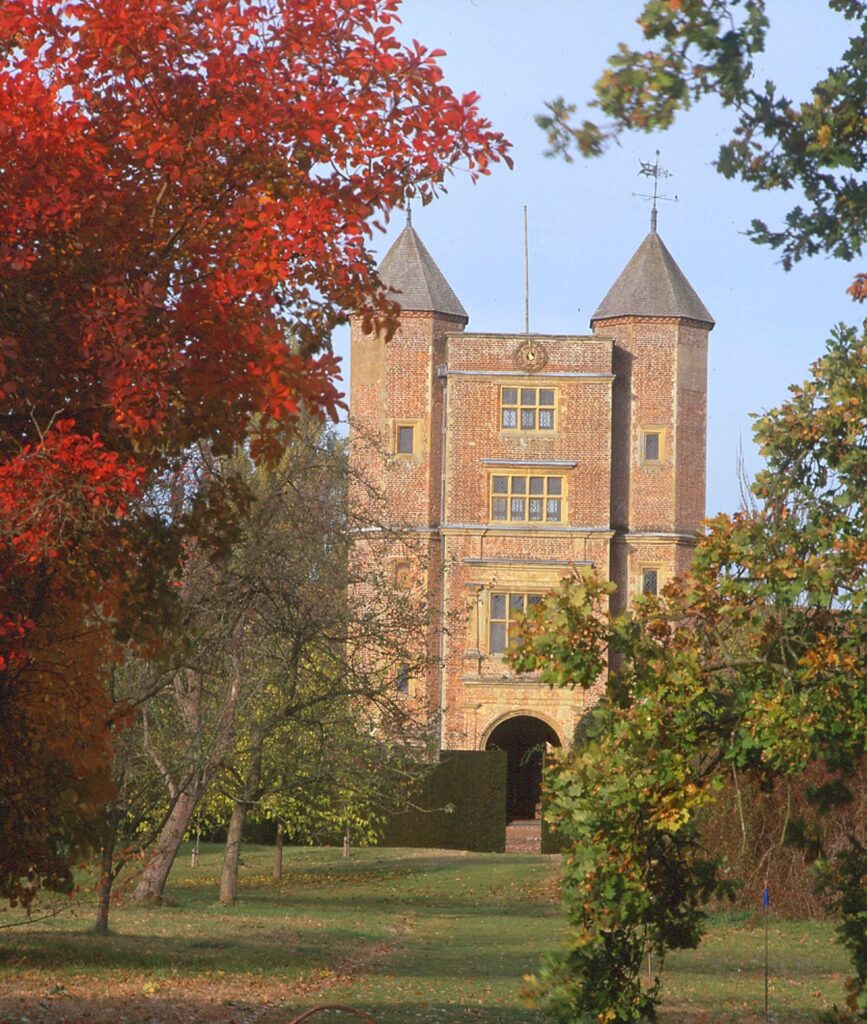
Head gardeners since then have done an incredible job of balancing respect for Vita and Harold’s masterplan, alongside contemporary innovations and the demands of maintaining a one of the UK’s most popular gardens. In recent years, Delos, a half-acre garden of Mediterranean planting that evokes the thirsty, sun-drenched landscape of the Greek islands, has been added. It’s been a controversial enhancement, but the inspiration was a failed 1930s project by Vita and Harold, and the modern interpretation is a triumph, with naturalistic layering of cypress, fig and cork oaks sprouting from the rocks and gravel and alongside grasses, thyme, field poppies and drought tolerant wild flowers.
Beyond the showpiece gardens, there’s more than sufficient to occupy a full day here, from taking time to enjoy the public rooms and regularly changing exhibitions to meandering around the kitchen garden where food is grown for Sissinghurst’s café and following a three-mile walk around the wider estate. For cyclists, the National Trust website has a downloadable map of a 6½-mile route to Sissinghurst from Staplehurst train station.
Tunbridge Wells
Granted its royal prefix in 1909 by Edward VII, this elegant Kent spa resort owes its fortunes to the discovery of its iron-rich spring in the early 17th century. In the space of a handful of decades, royalty and fashionable society were flocking here to sip the restorative waters, said to cure everything from infertility to a ‘moist brain’, and to mix and mingle in a relaxing countryside setting.
The spring may no longer be Tunbridge Wells’ raison d’etre but this comfortably off town continues to be a prime place to unwind with plenty of urban pleasures close at hand. Having had 400 years to hone its commercial acumen, it is one of the most attractive places to go shopping or have a meal in Kent.
The immediate proximity of natural landscapes to Tunbridge Wells is one of the town’s most compelling attributes. Within a few minutes’ walk of the town centre you can be surrounded by greenery and nature. There are plenty of great walking trails to follow and the nostalgic Spa Valley Railway is another way to connect to the extraordinary High Rocks and the gorgeous gardens of Groombridge Place. A little further afield, in Speldhurst, there’s a church with superb stained-glass windows by the key Pre-Raphaelite artist Edward Burne-Jones.
What to see and do in Tunbridge Wells
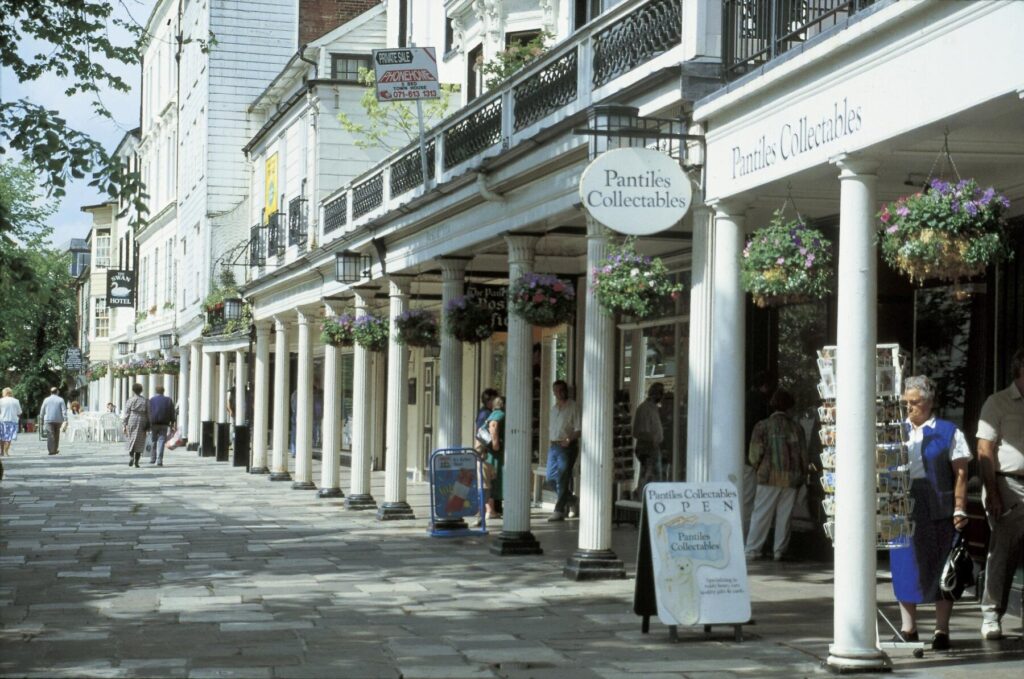
The Pantiles
Much of what made Tunbridge Wells attractive to Regency and Victorian visitors endures today. The obvious place to begin is the pedestrianised Pantiles, the oldest part of town, after which you could work your way steadily uphill via High Street to its more modern suburbs to find the newly revamped museum The Amelia and the prestigious buildings and parks laid out by Decimus Burton.
Named after its paving of Wealden clay square tiles, The Pantiles has been Tunbridge Wells’ epicentre of fashion and polite society for over 350 years. Distinguished by the colonnades added to the shopfronts in the 17th century, and its pedestrian upper and lower walks, it remains a place to indulge in eating, drinking, shopping and generally watching the world go by. At its northern most end is the chalybeate (pronounced ‘ka-lee-bee-at’) spring that made the town’s fortunes. The rusty-coloured waters don’t always flow but when they do (usually in the summer months) a ‘dipper’ in 18th-century costume is usually there to dispense them to anyone who wishes to find out what all the fuss was once about.
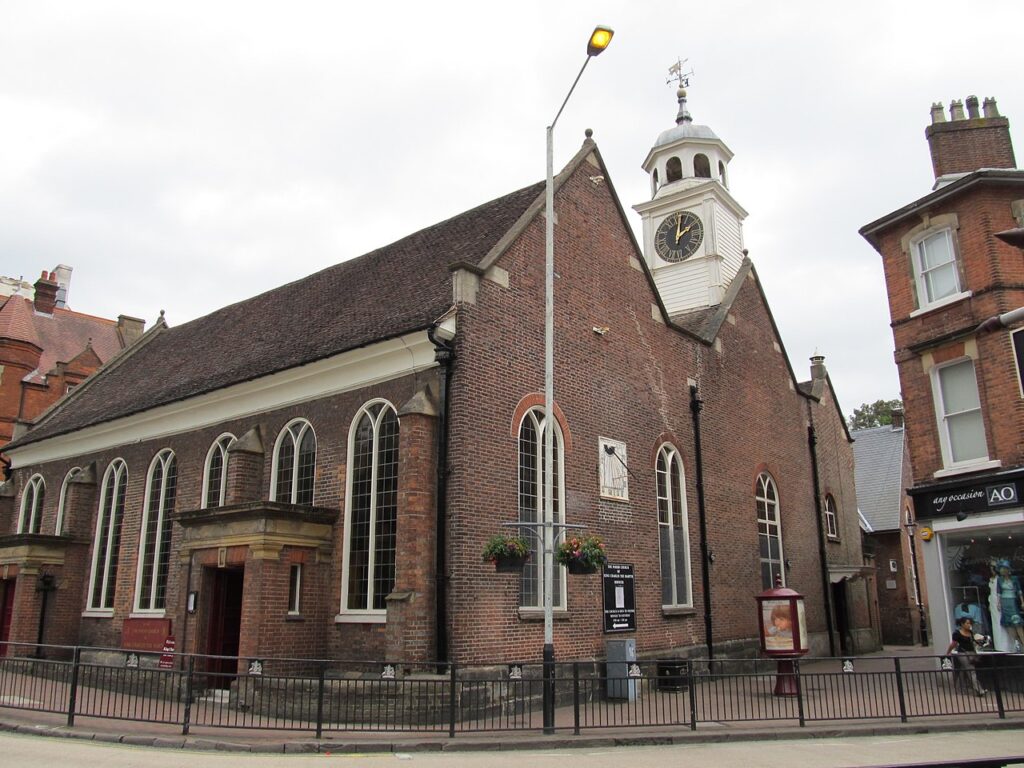
Church of King Charles the Martyr
Opposite the north end of The Pantiles is the Church of King Charles the Martyr. The London entrepreneur Thomas Neal, who recognised the commercial possibilities of the spring, commissioned the original 1684 chapel here. It was not only a place of worship but also somewhere for visitors to shelter when the weather turned nasty.
The church has been much altered over the years, but has retained its original late 17th-century plasterwork ceiling with highly decorative domes made by John Wetherell and Henry Doogood, both of whom had gained their skills working with Sir Christopher Wren in London.
Claverley Grounds
Chapel Place, behind the Church of King Charles the Martyr, leads on to High Street which climbs up towards the town’s train station at the foot of Mount Pleasant Road. To the right and accessed off Mount Pleasant Avenue is Claverley Grounds. This park was laid out in 1825 as part of the private Calverley Estate, a project overseen by the eminent architect Decimus Burton to create a neighbourhood to rival the older Pantiles. Claverley is the location for the summer world music festival the Tunbridge Wells Mela.
Trinity Church and old Opera House
Burton also designed the nearby Trinity Church, a Gothic Revival-style building that today serves as the Trinity Theatre. Another grand historic building at this high end of town that has undergone a conversion of use is the old Opera House, now a Wetherspoons pub. Dating from 1902, the early Edwardian interior has largely been retained and on its walls you can read about some of the personalities with historical links to the town, including Richard ‘Beau’ Nash, Master of Ceremonies at Tunbridge Wells from 1735 until his death in 1765.
The Amelia
Opened in April 2022, The Amelia is a new arts and culture centre that display the collections of Tunbridge Wells’ old museum. Renamed after Amelia Scott, a local social reformer and women’s suffrage campaigner, there are seven artworks integrated into the building’s design, including gate panels that reference the history of ironmaking across the High Weald and a ‘living-gallery’ courtyard with plants and trees indigenous to the Kent countryside. The Amelia have also developed a free app, Tales of Tunbridge Wells, which you can download for an entertaining and informative audio-led walking trail through the town.
Related books
For more information, see our guide to Kent:
Related articles
Move over Whitstable and Margate: Folkestone is currently the place to be on the east Kent coast.
From wildlife reserves to picturesque beaches.
From rustic gastropubs to converted castles.
From medieval pubs to former Georgian rectories.
From working farms to nature reserves.
